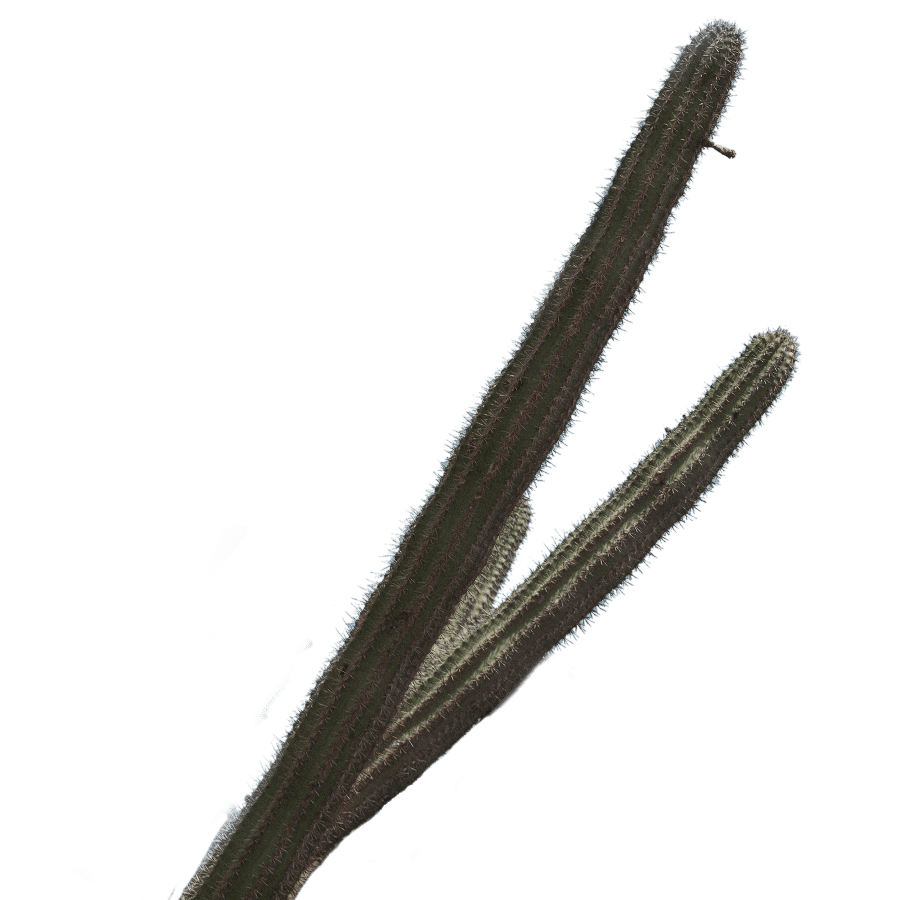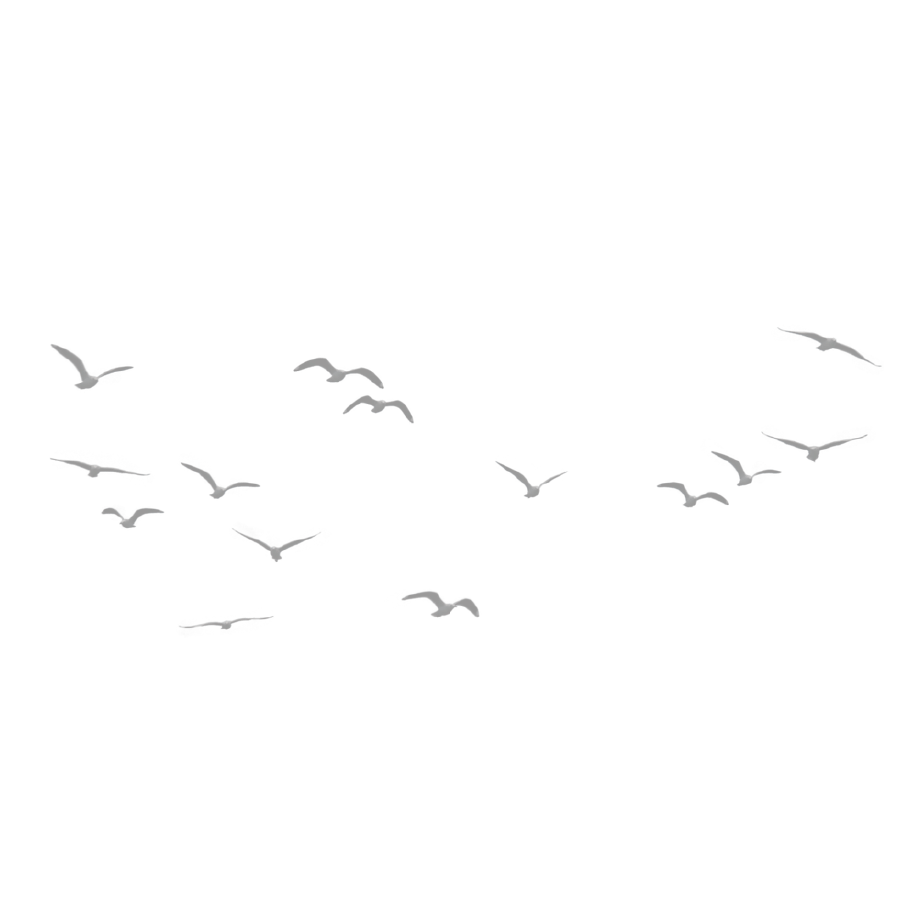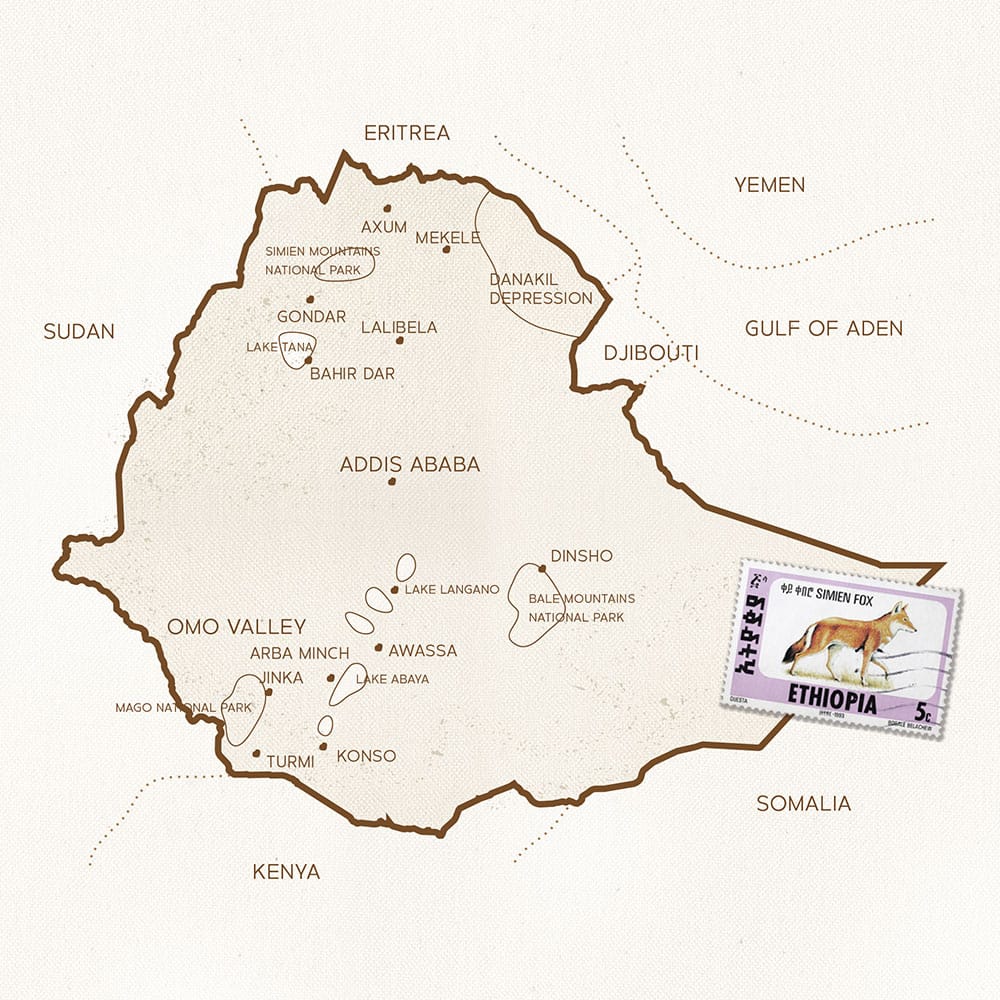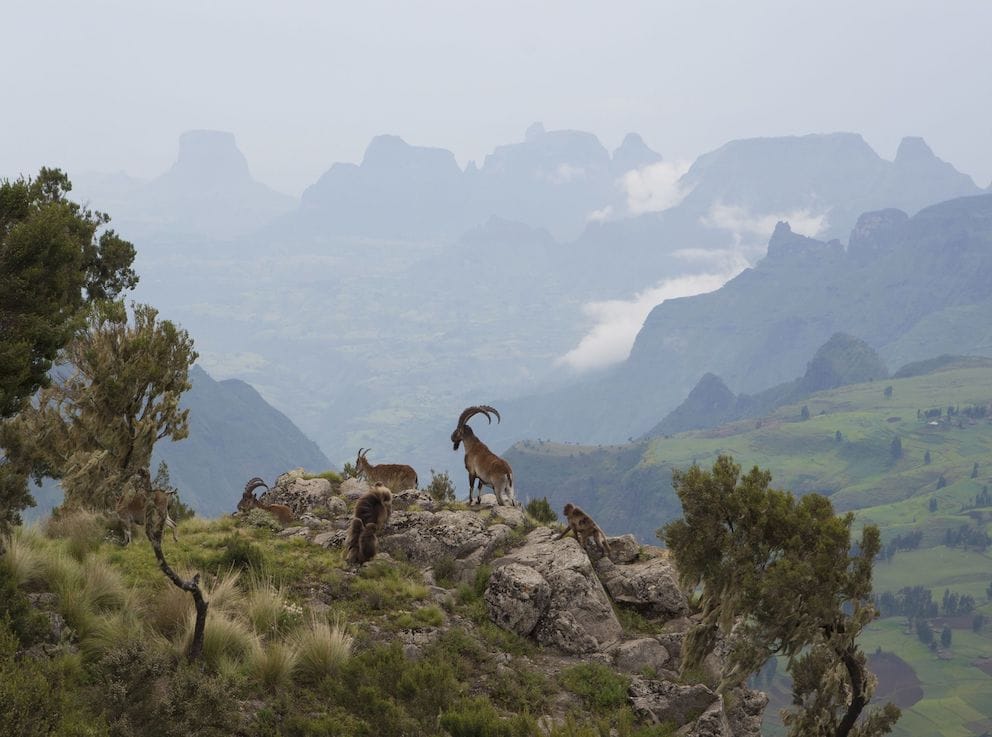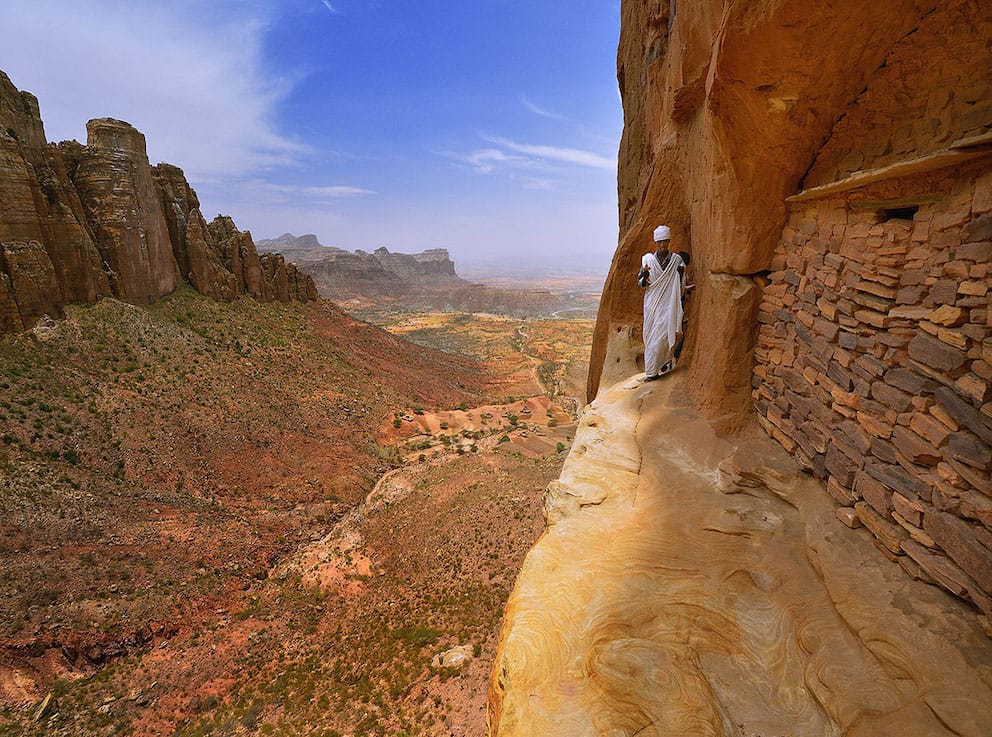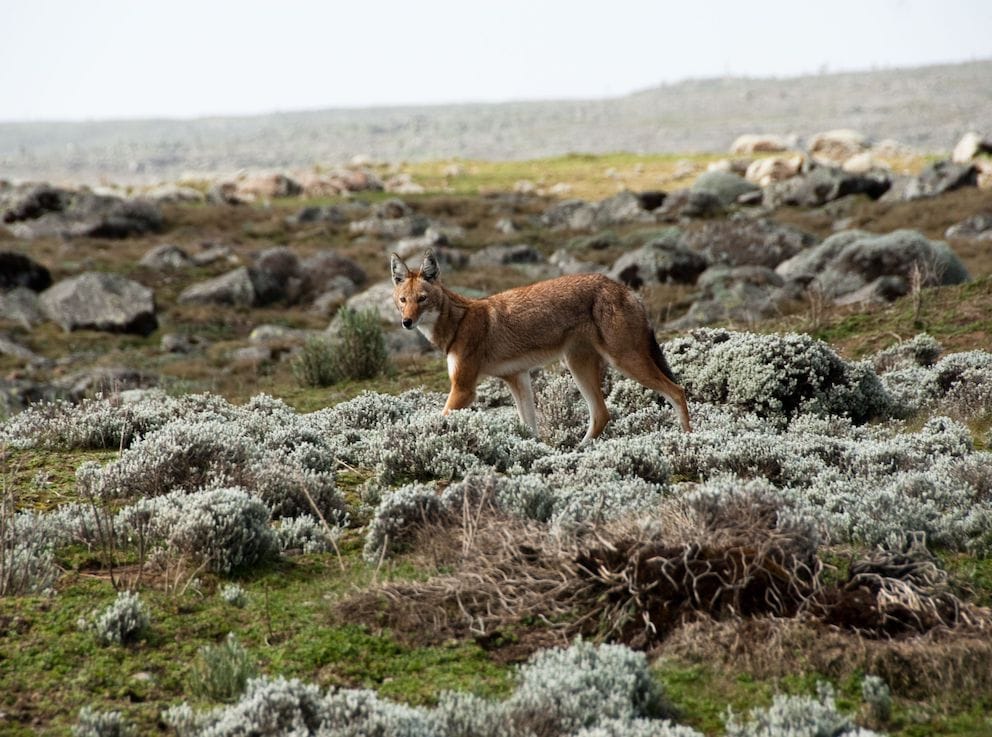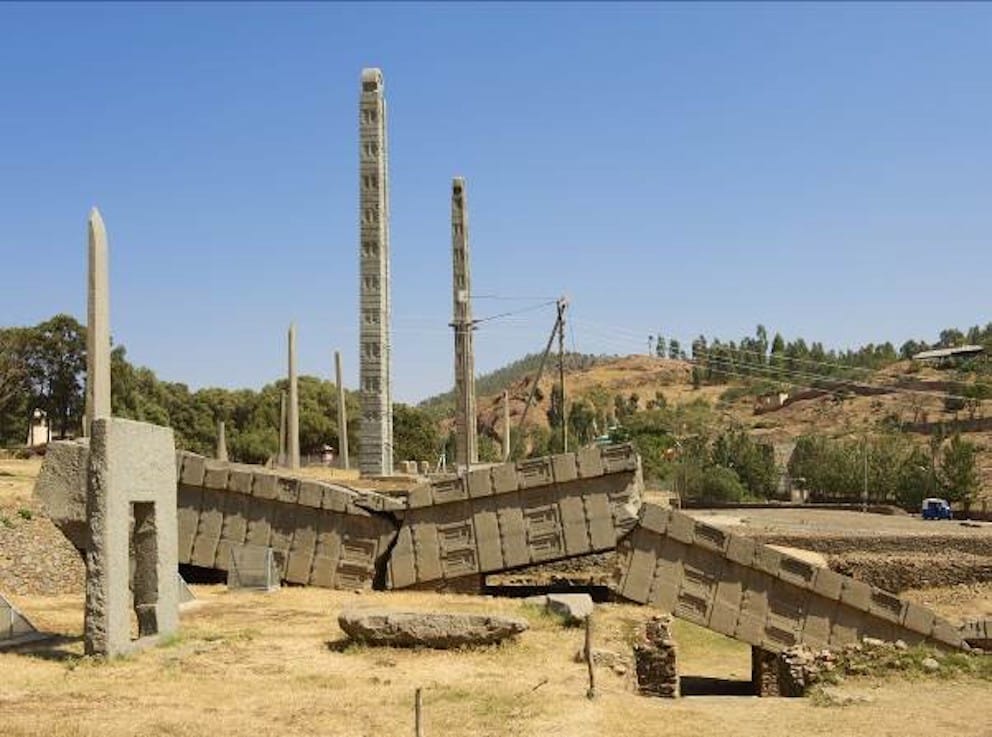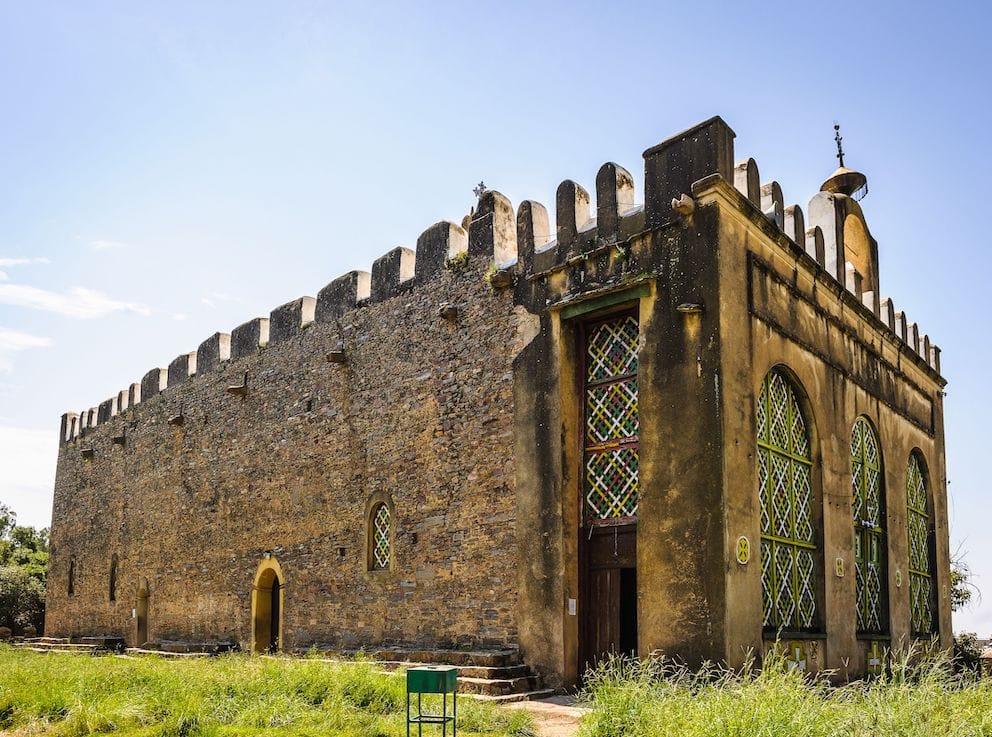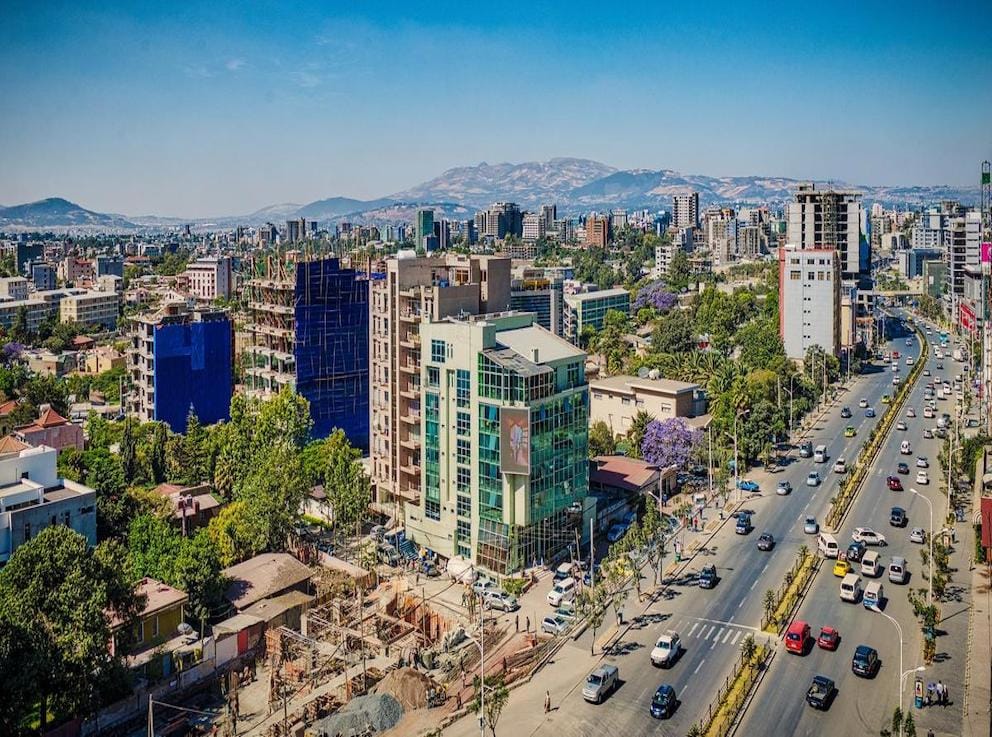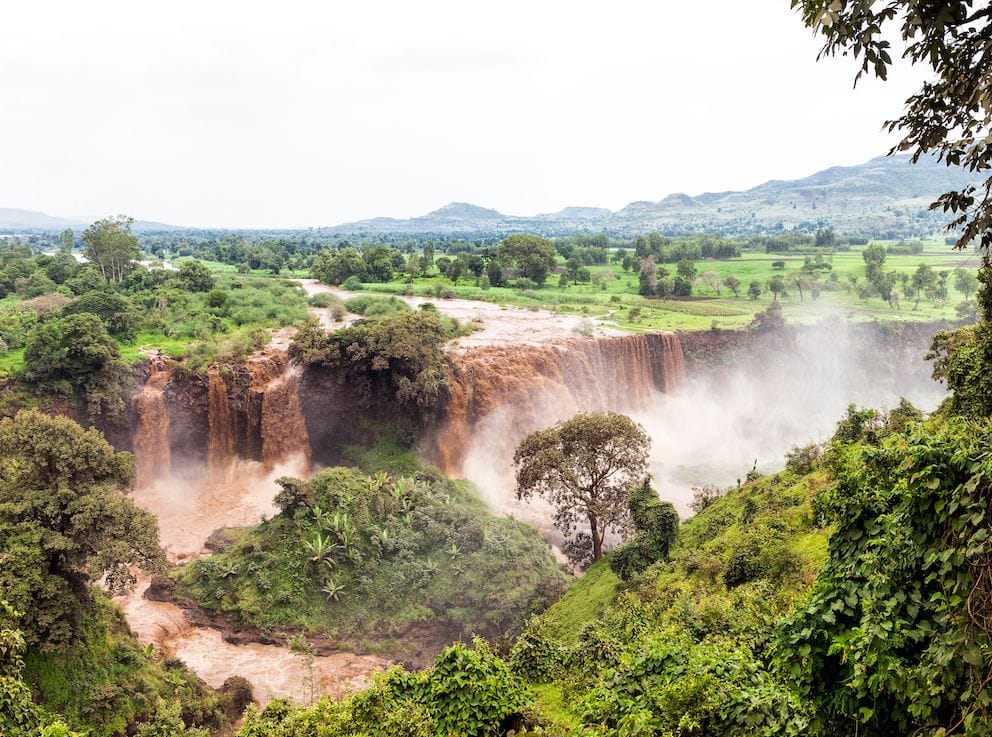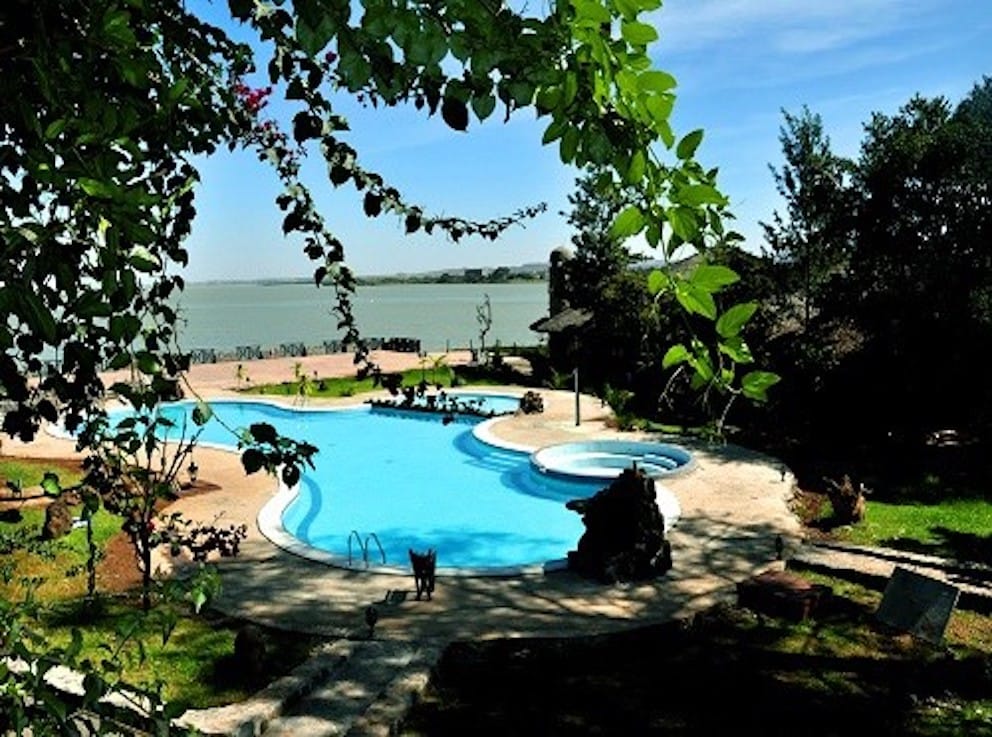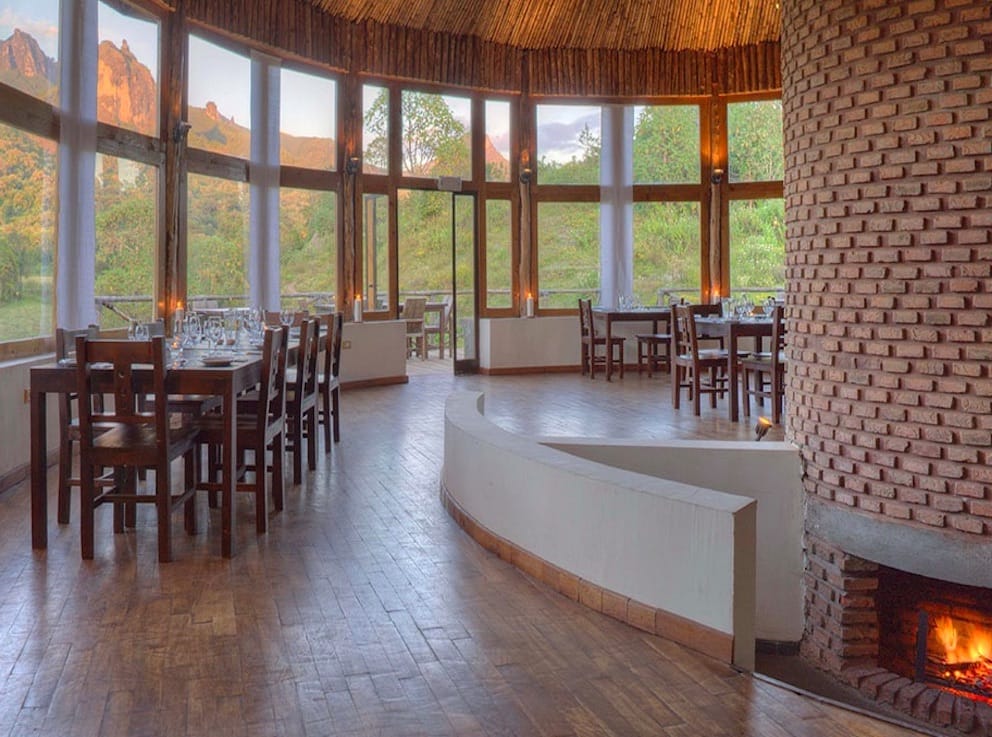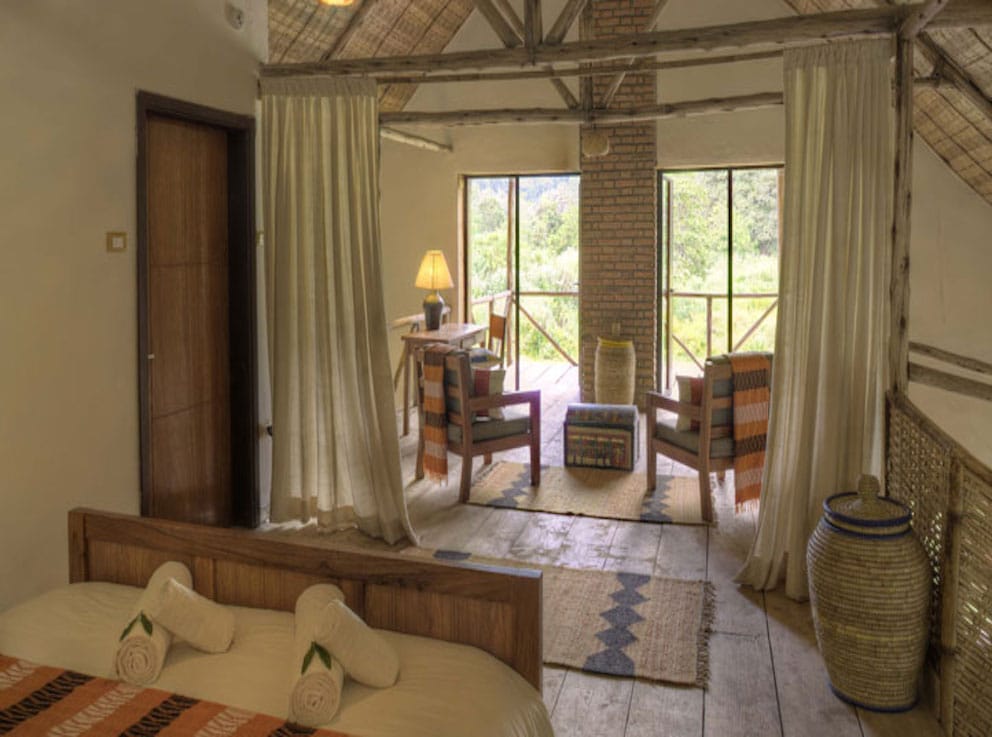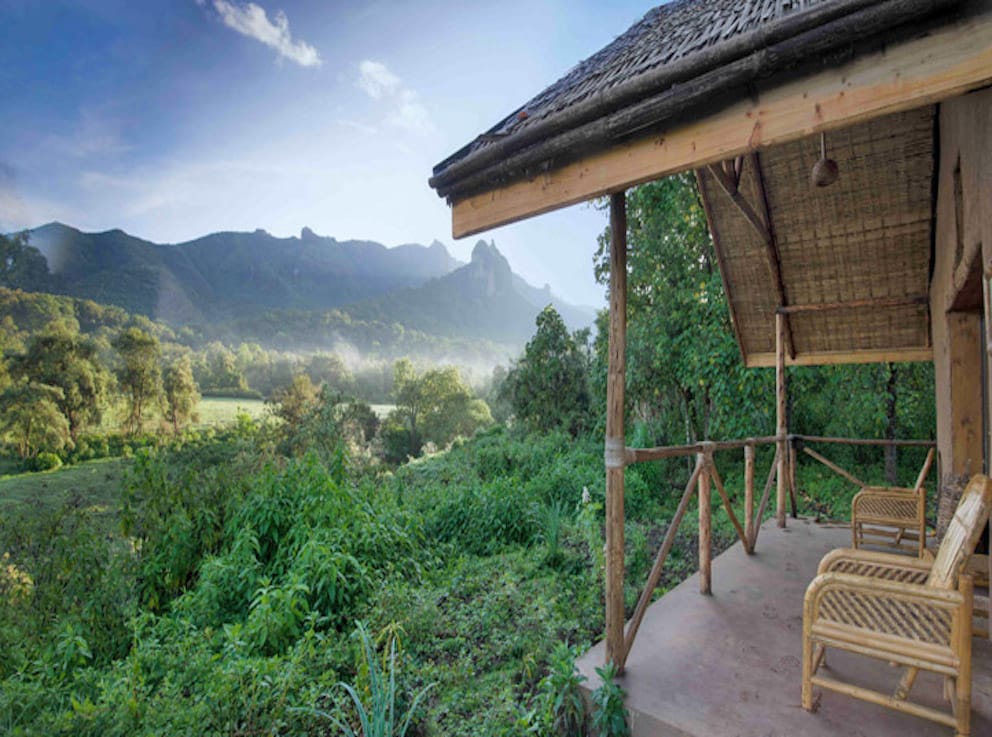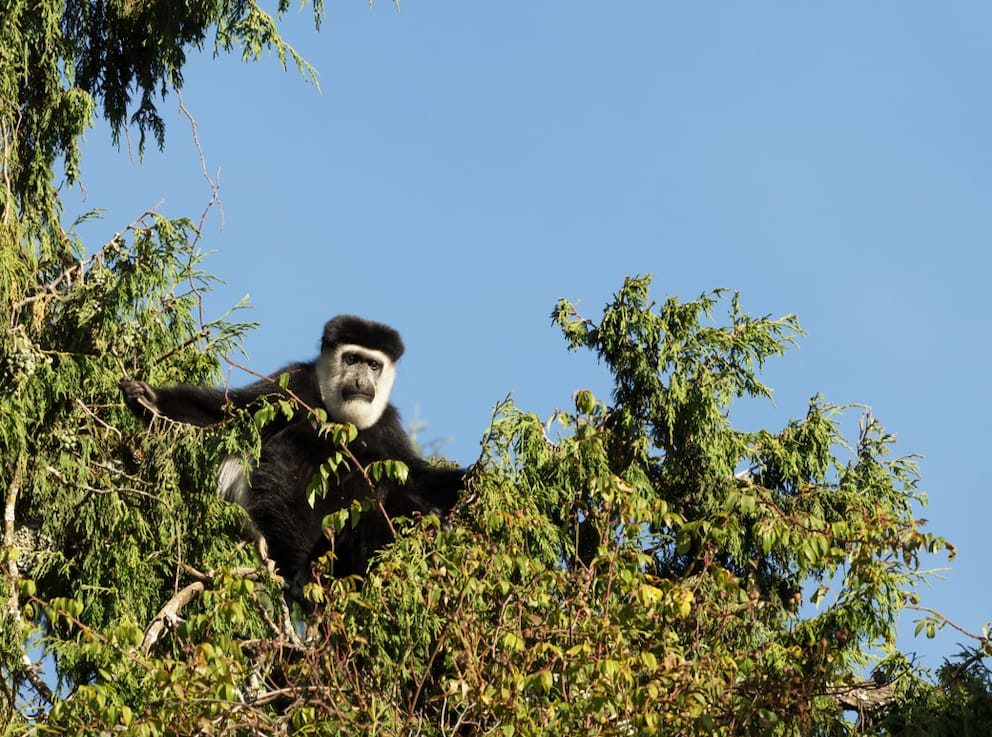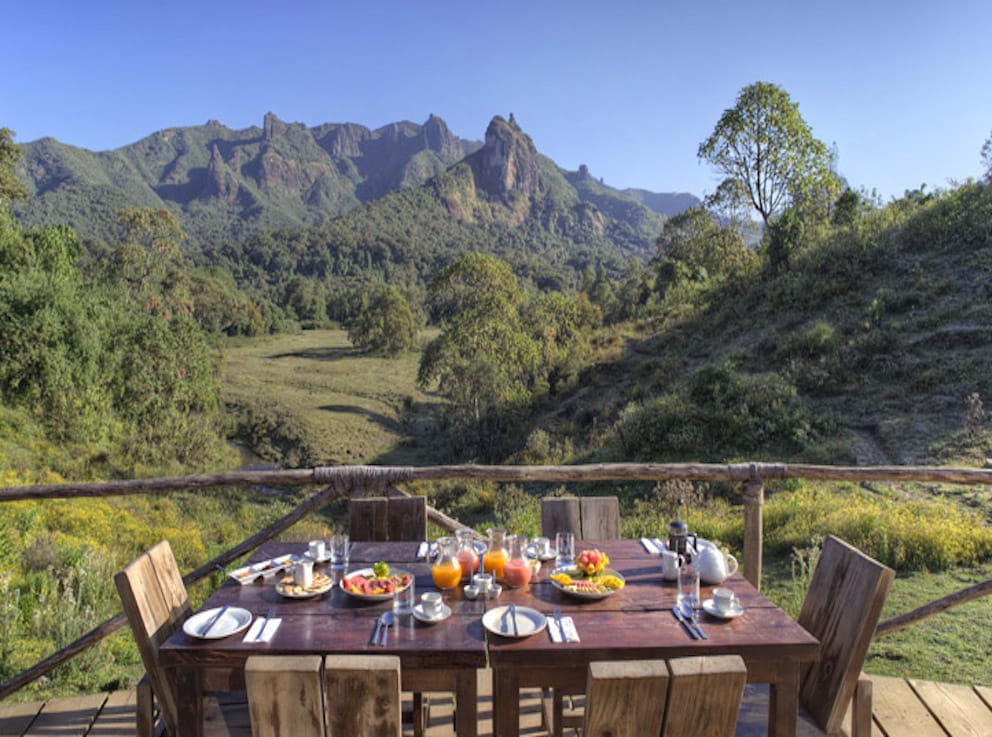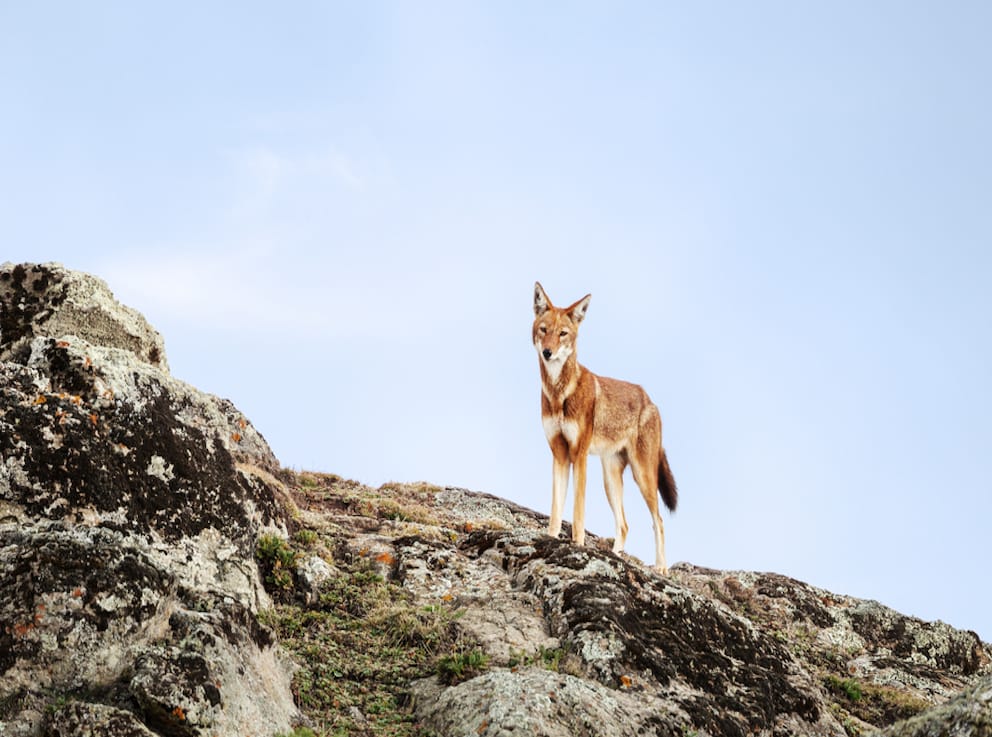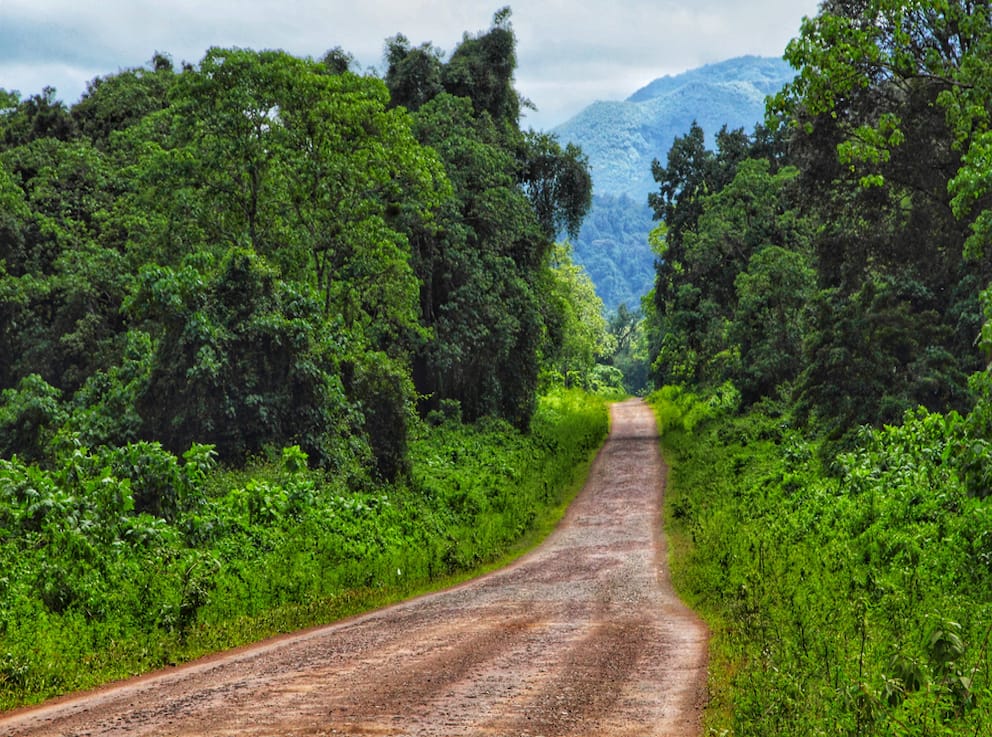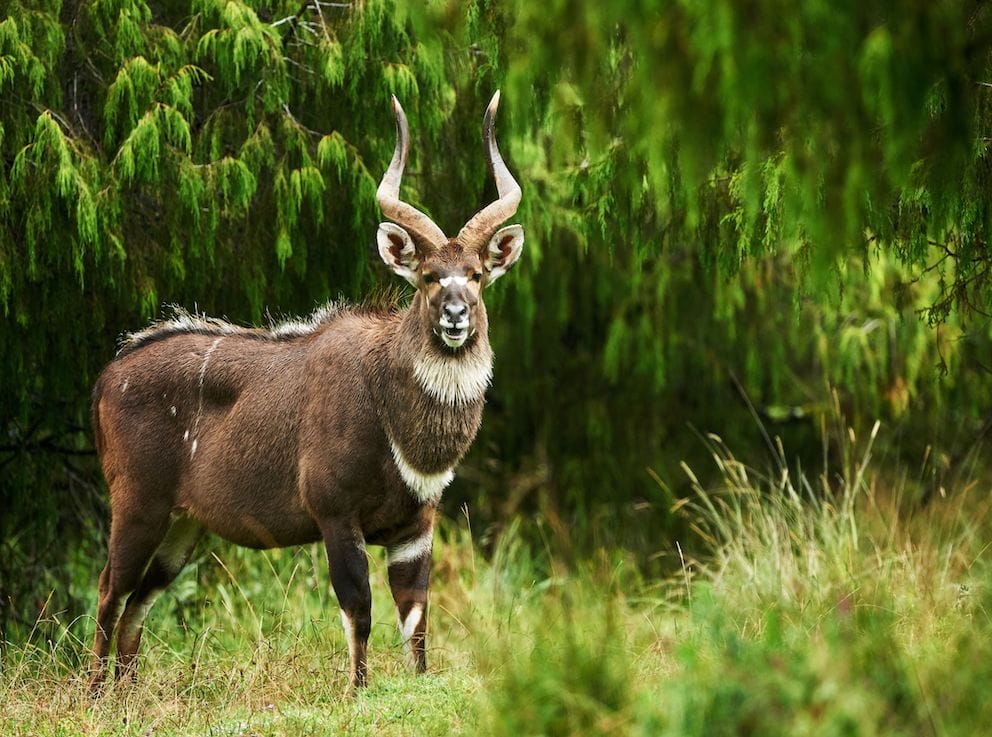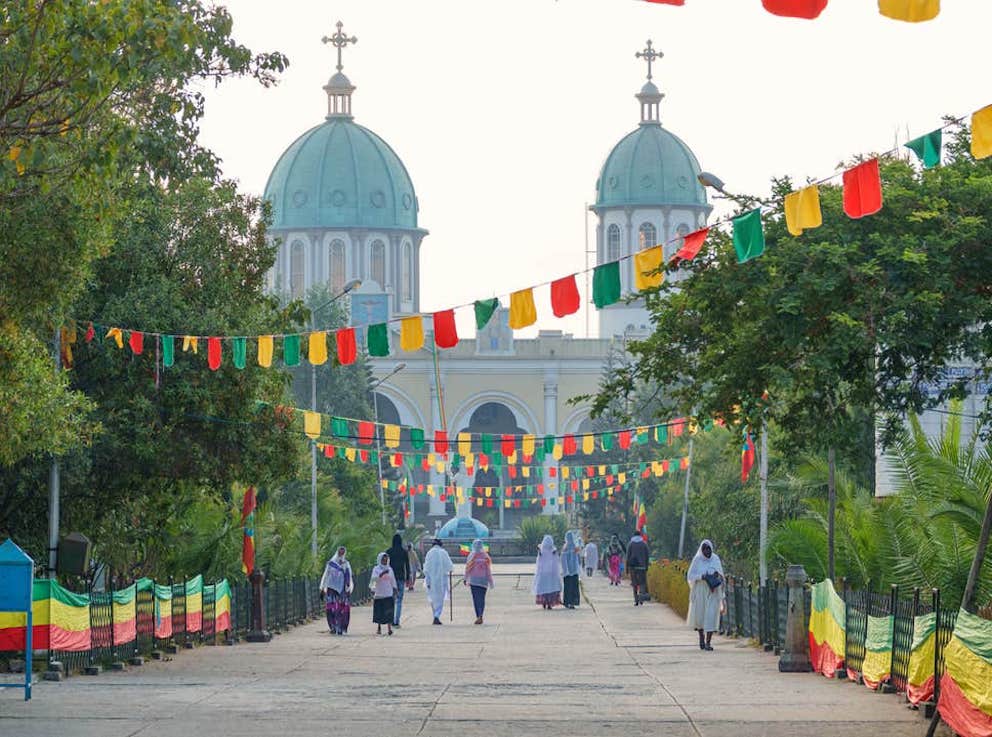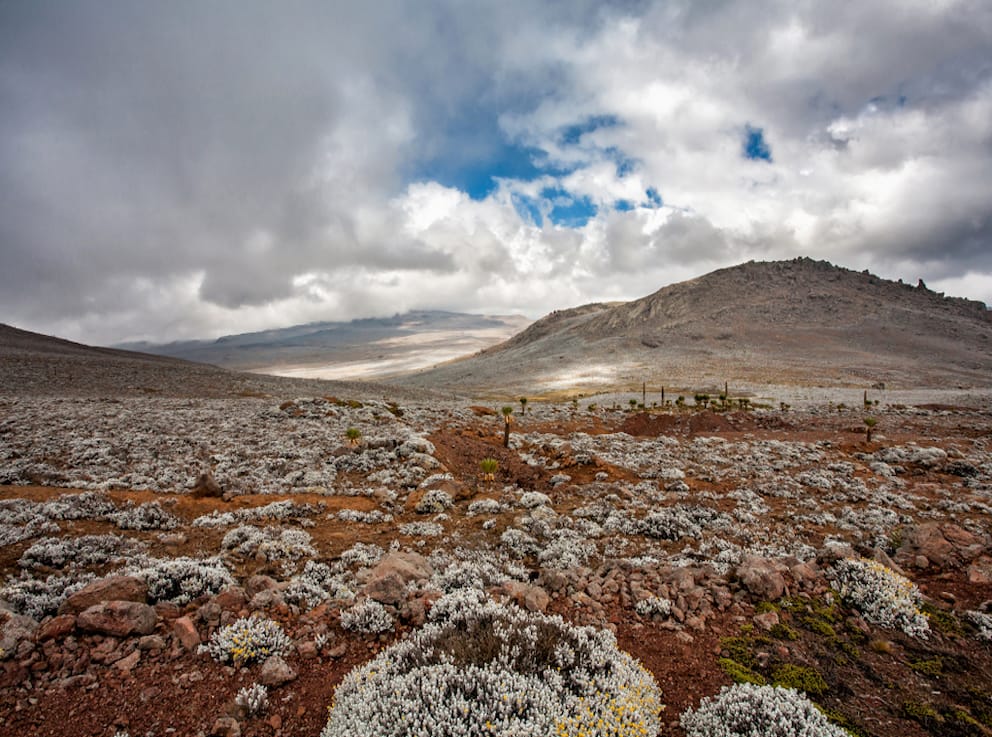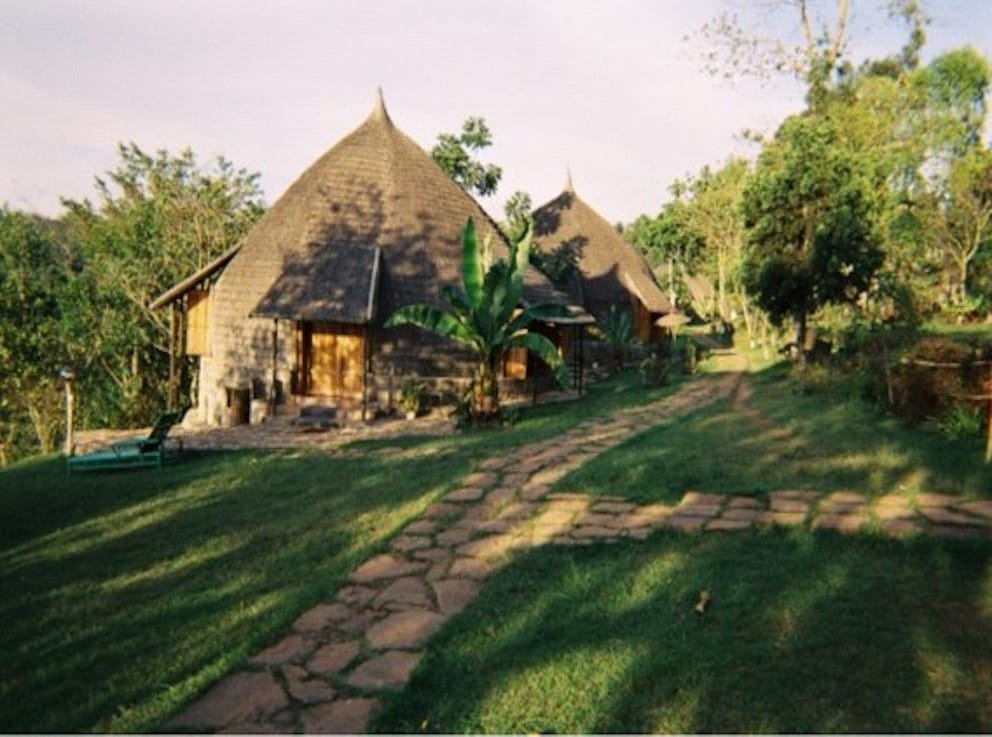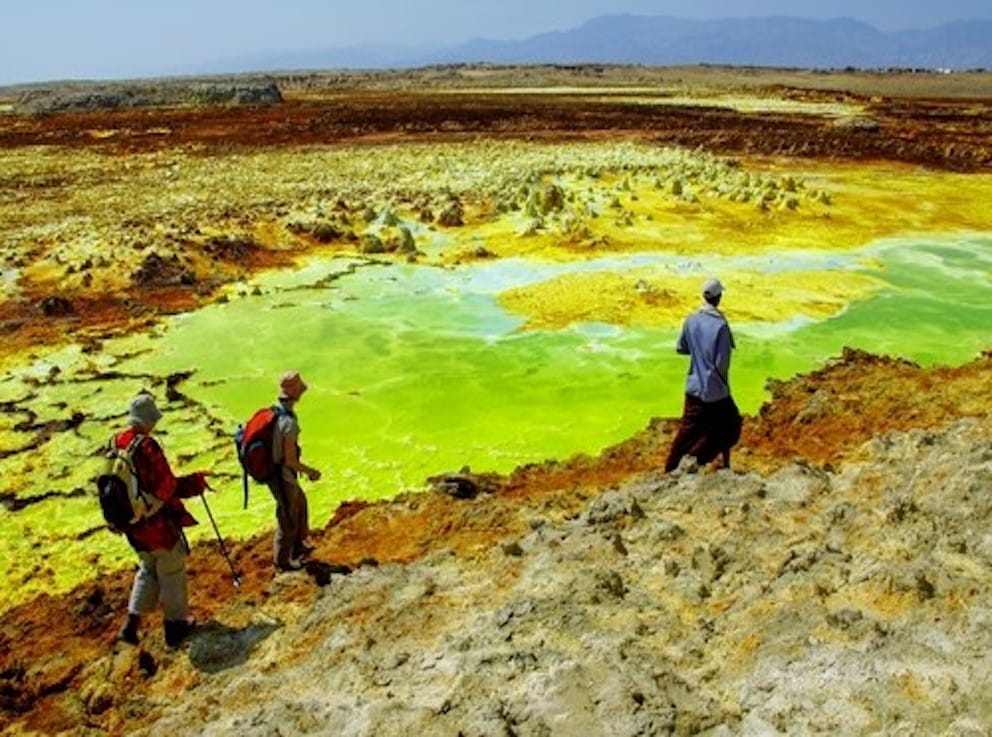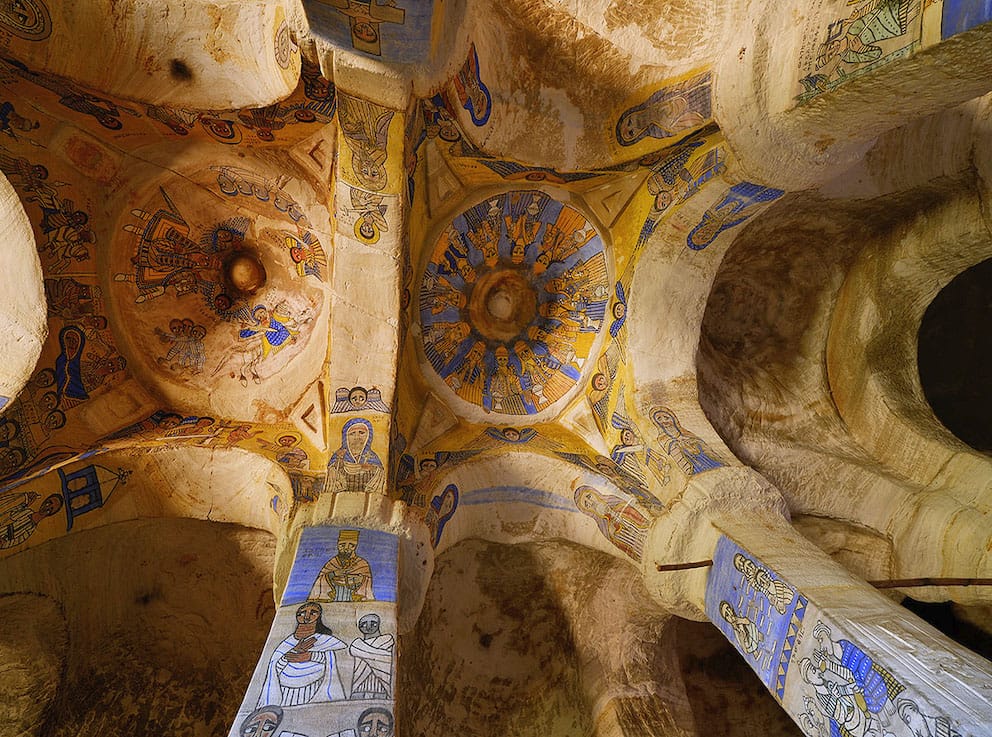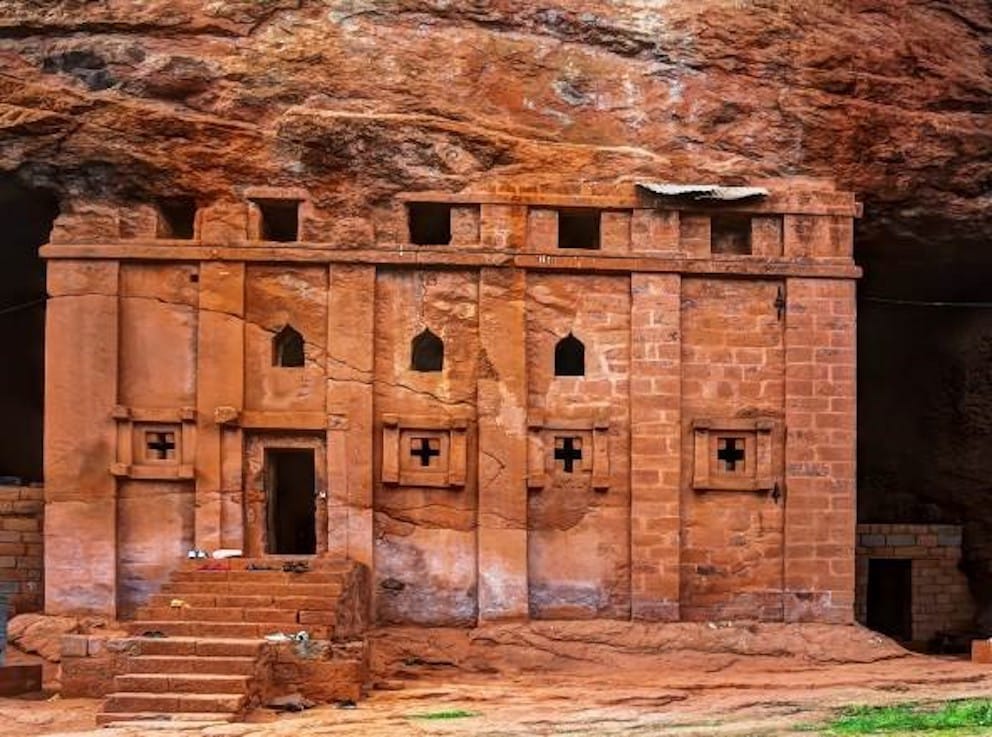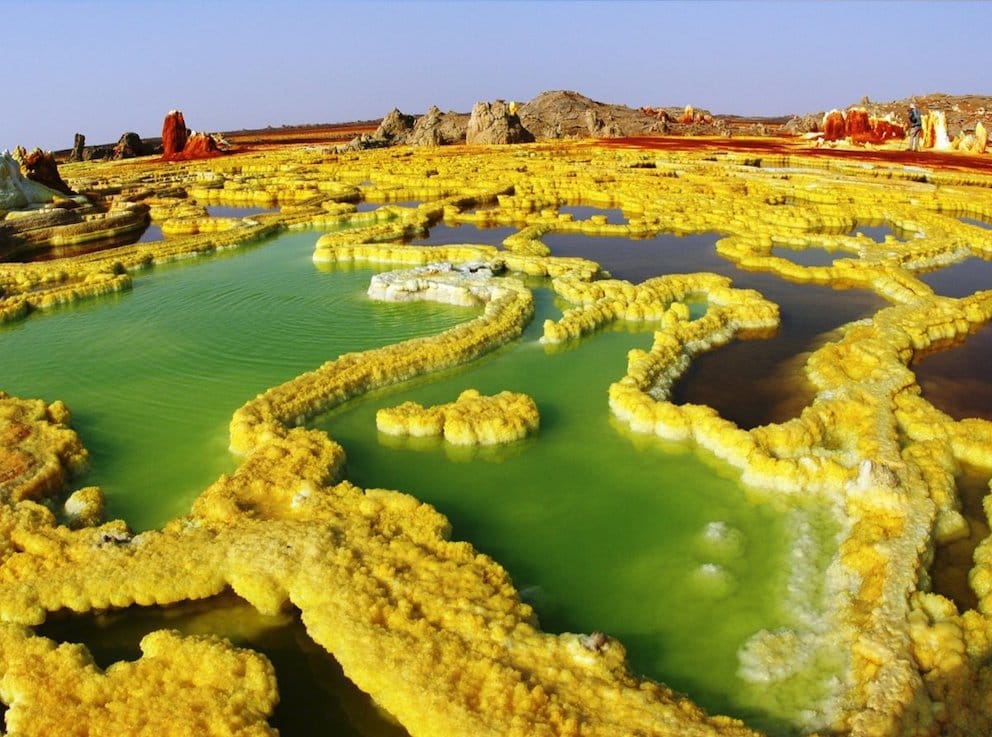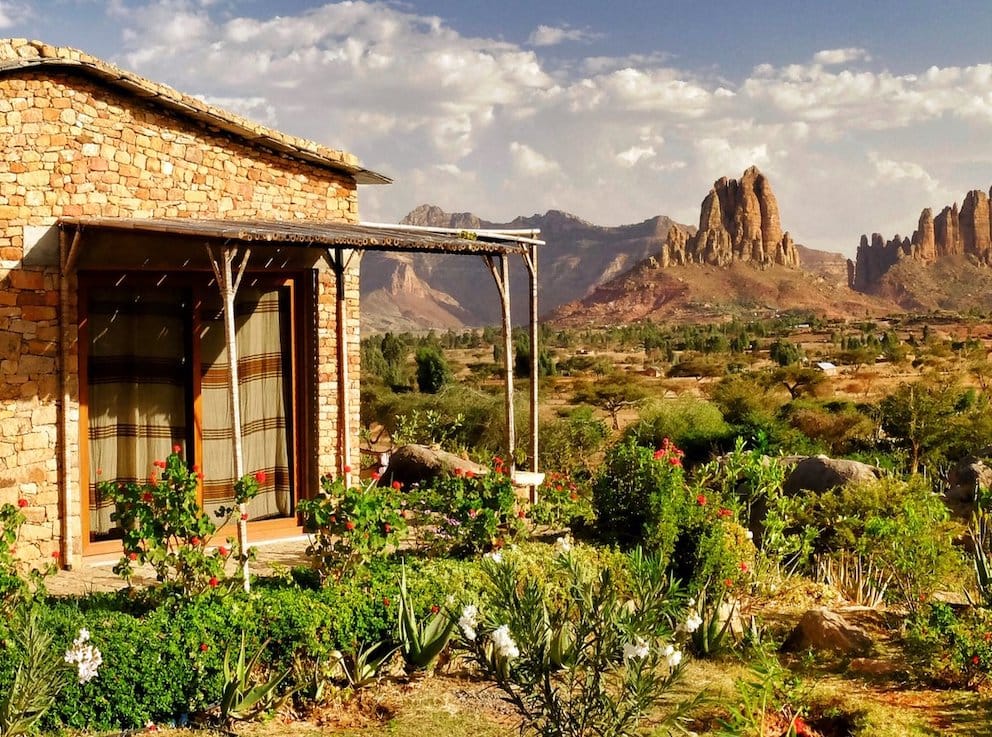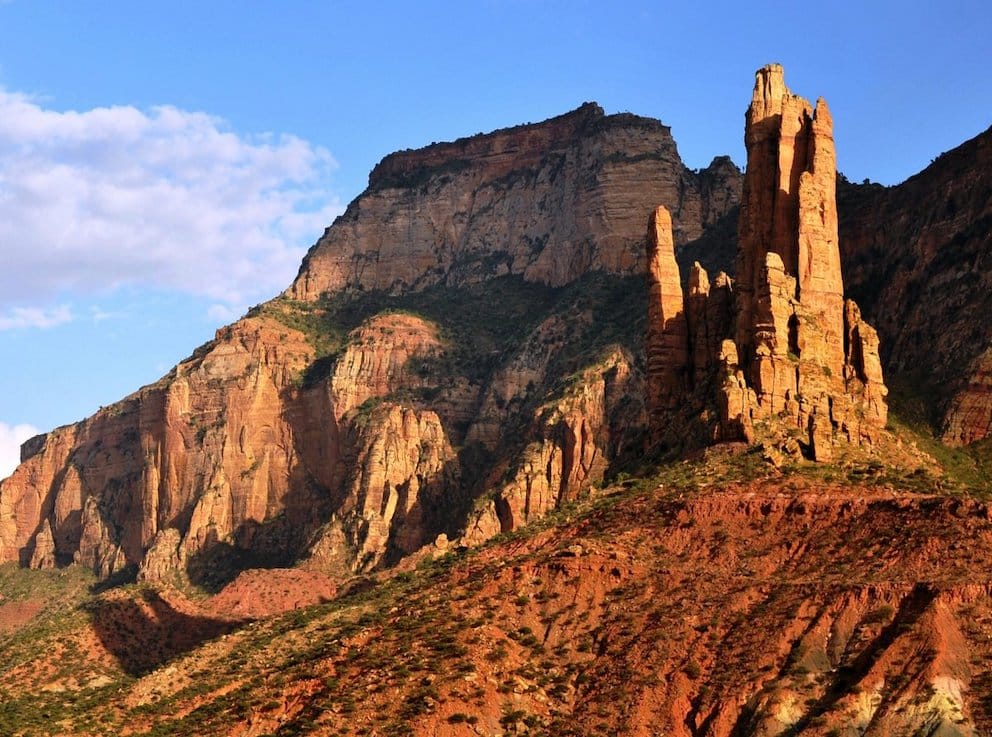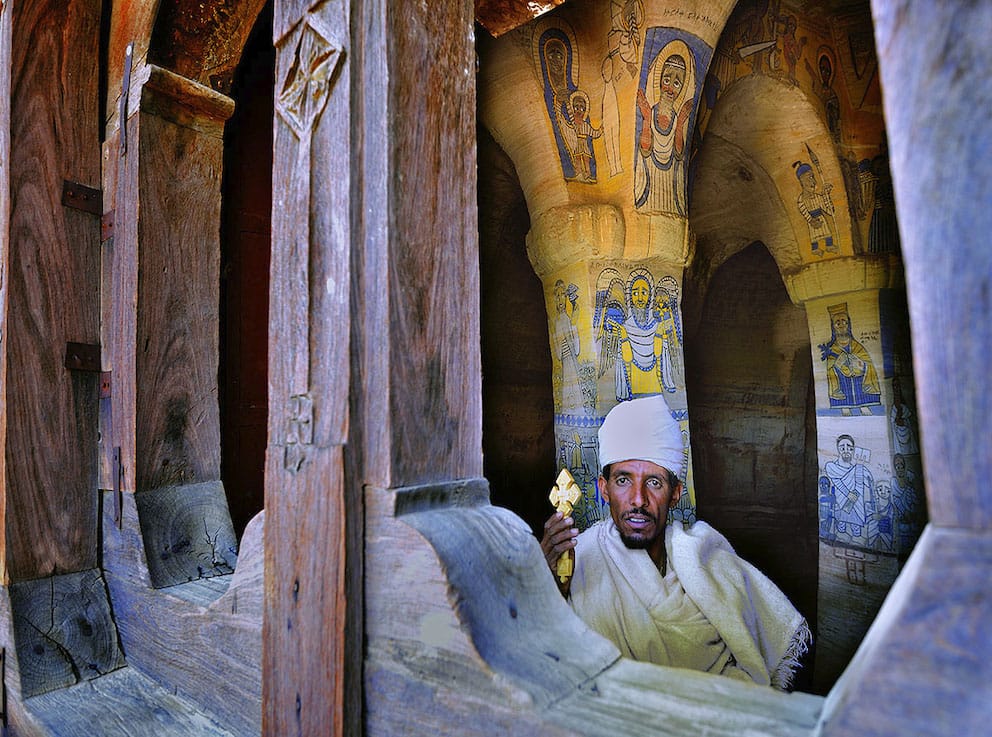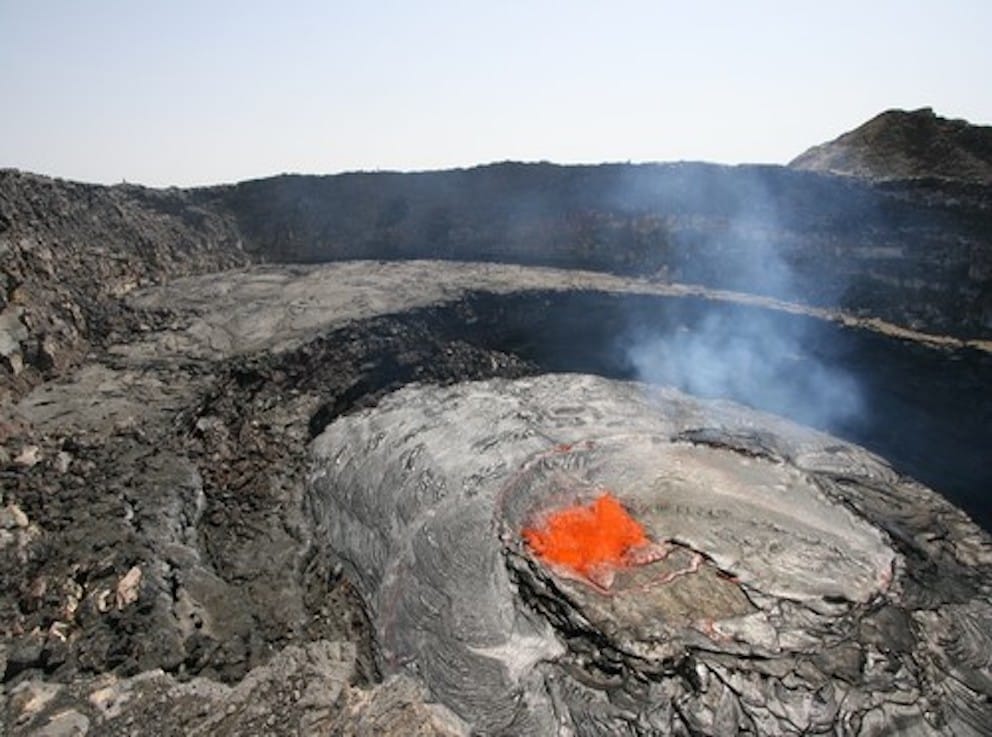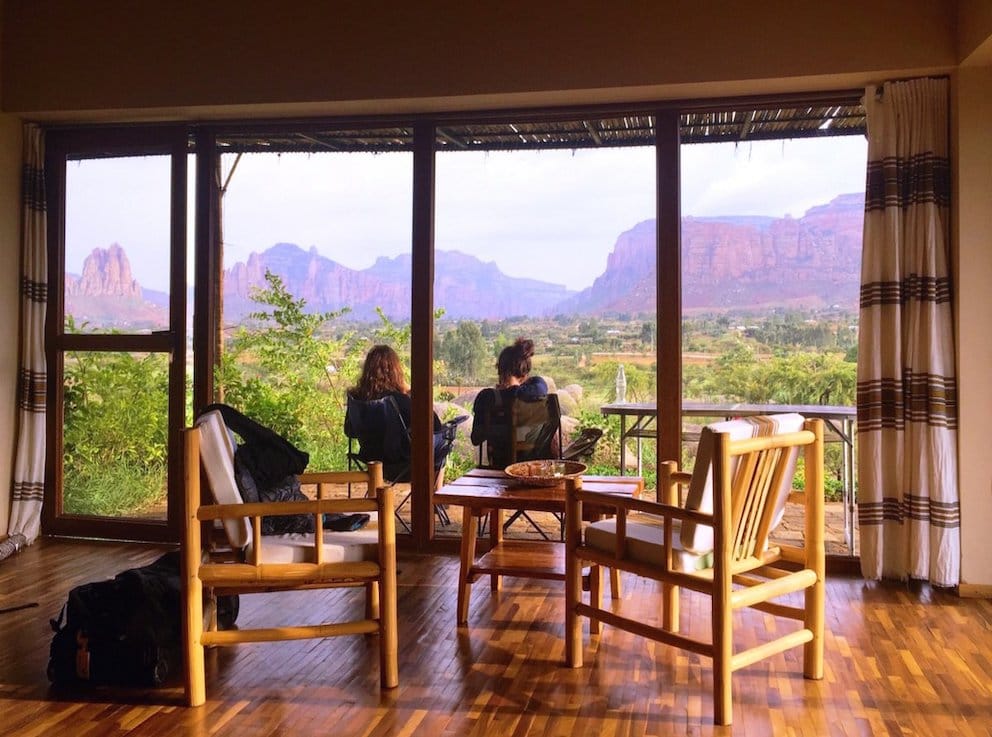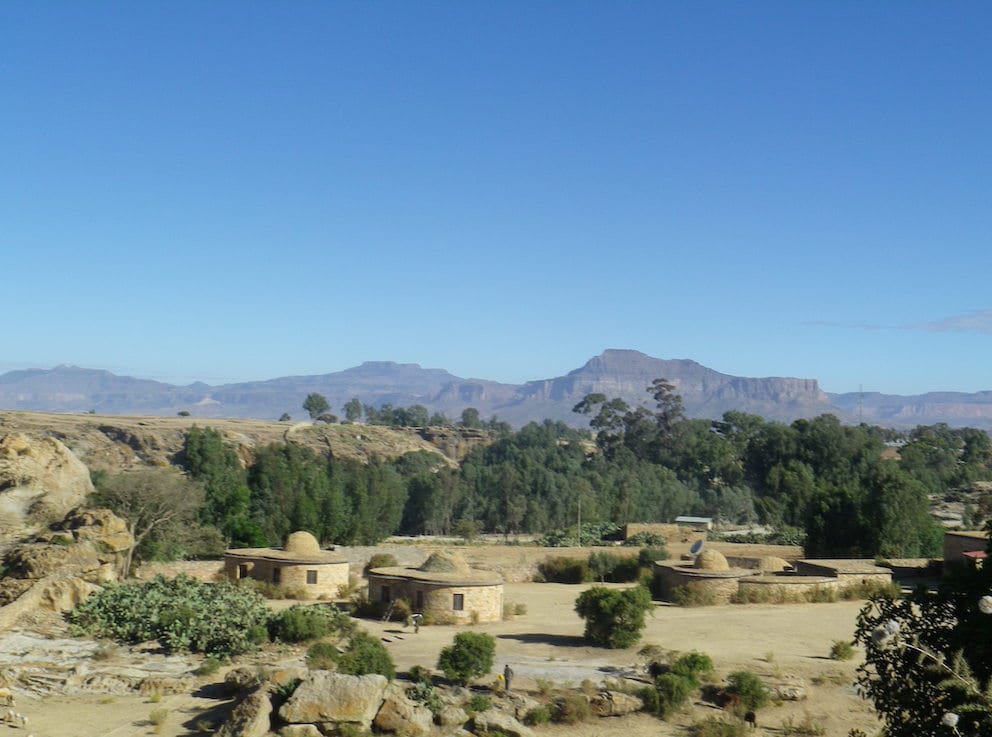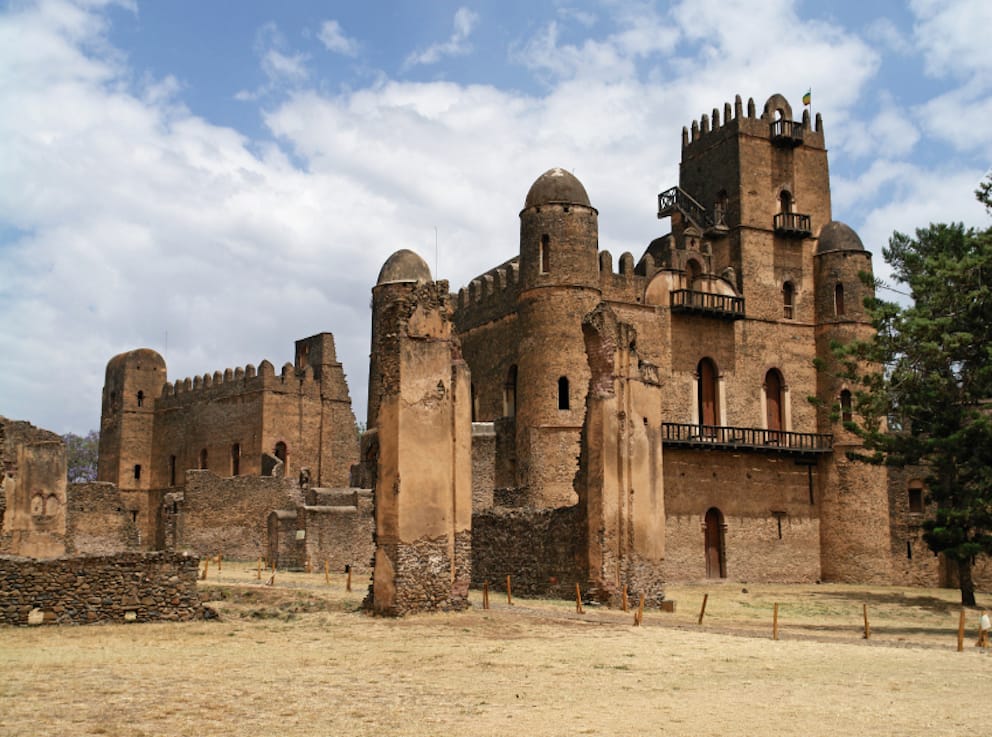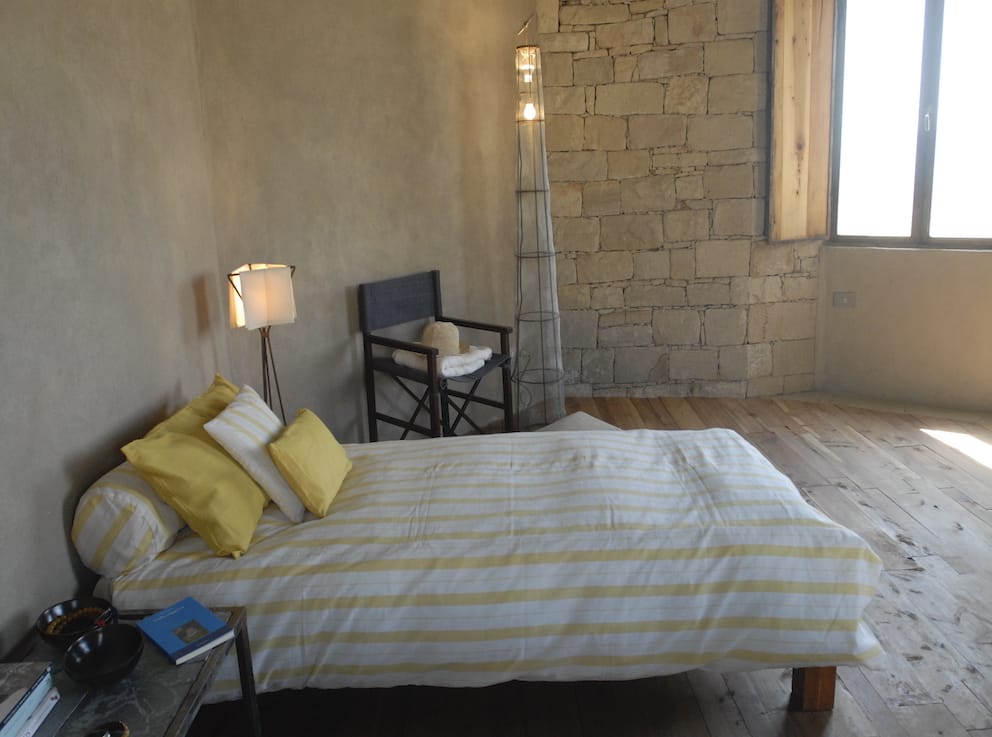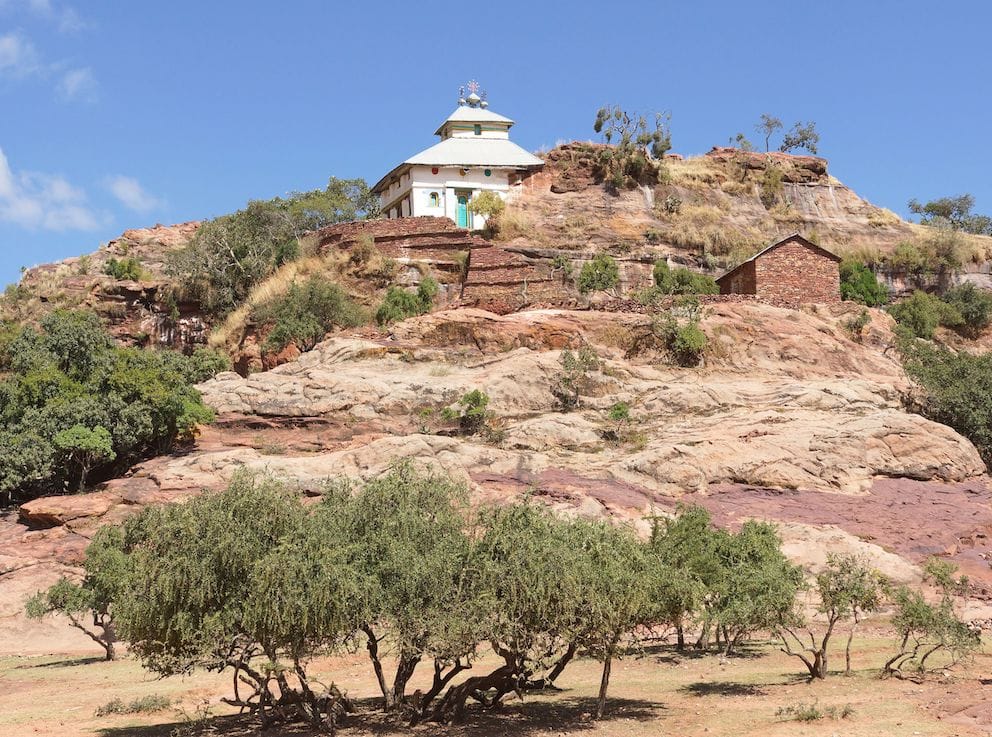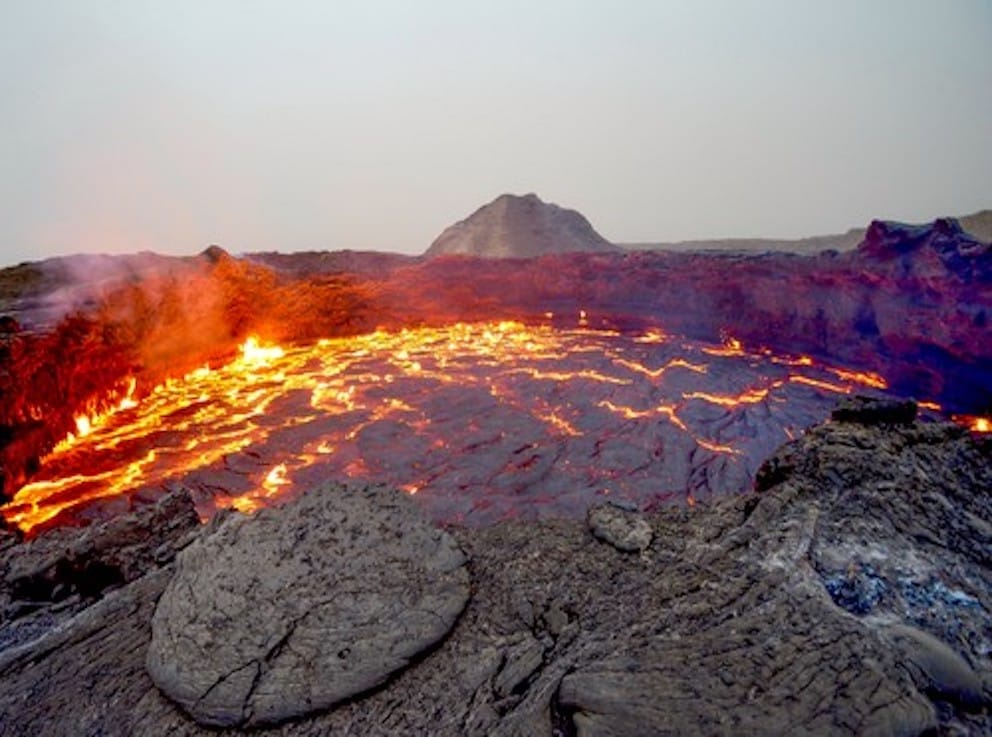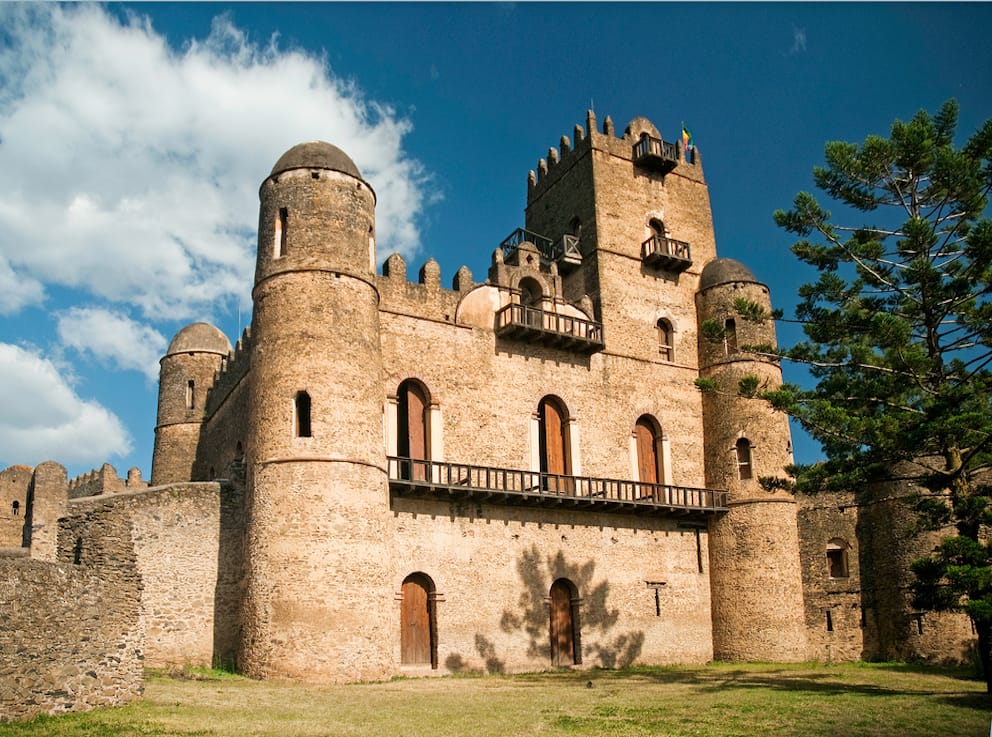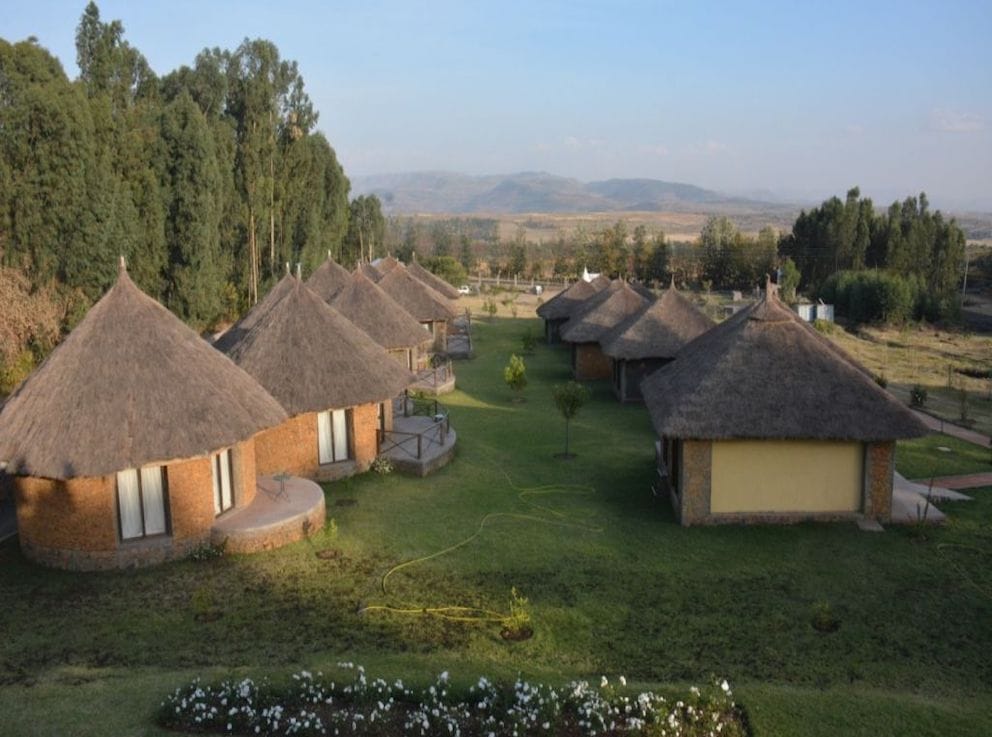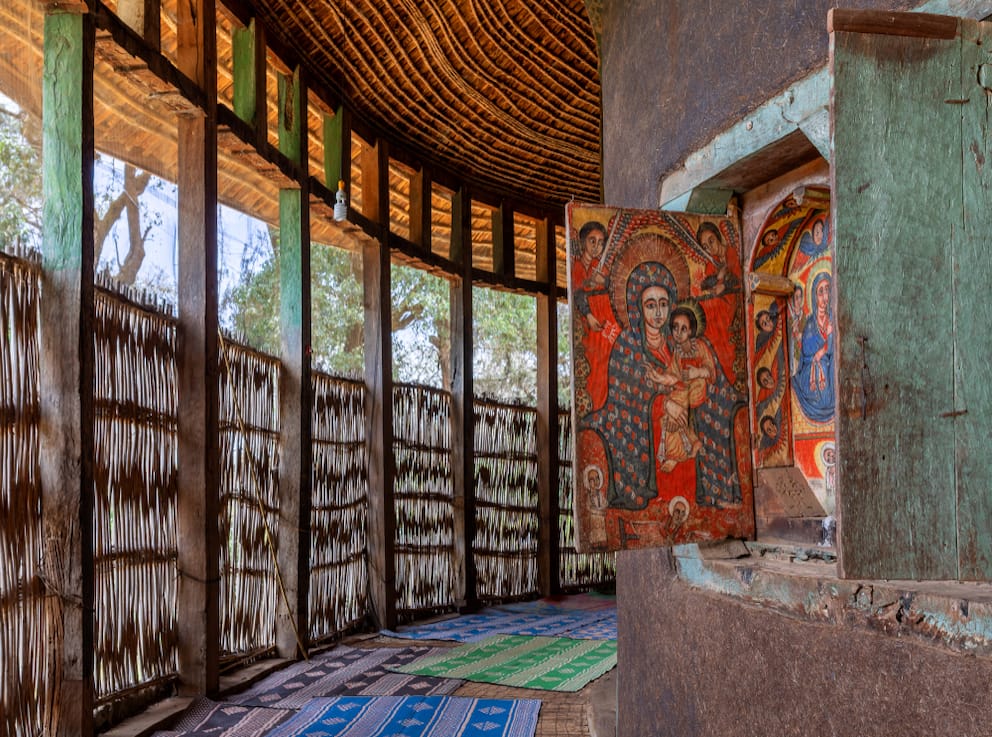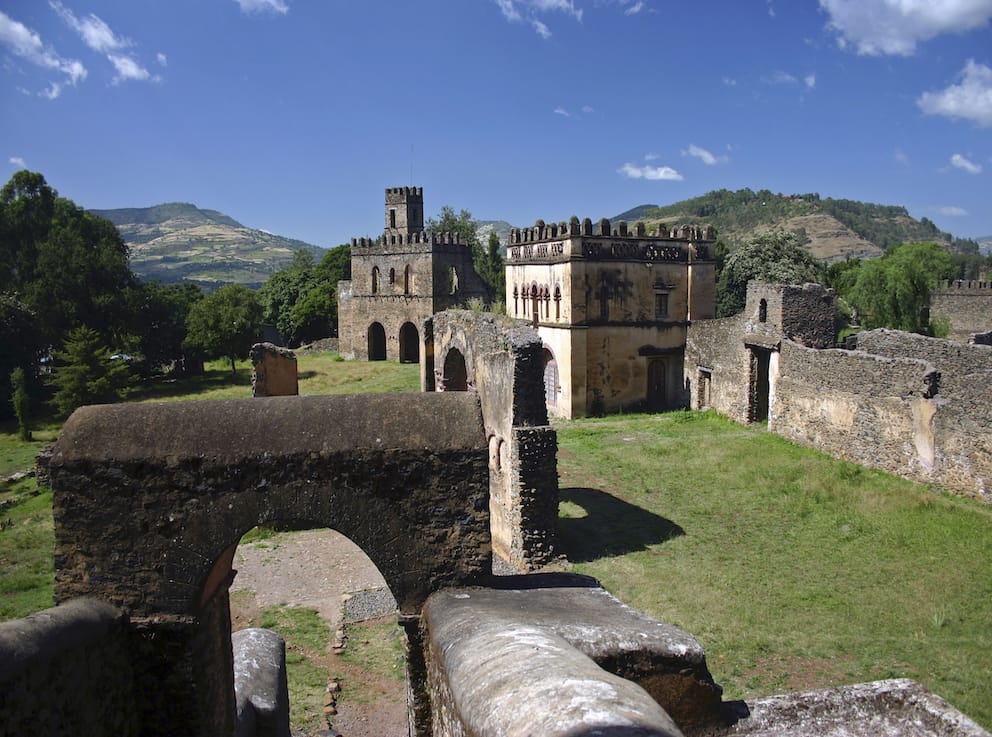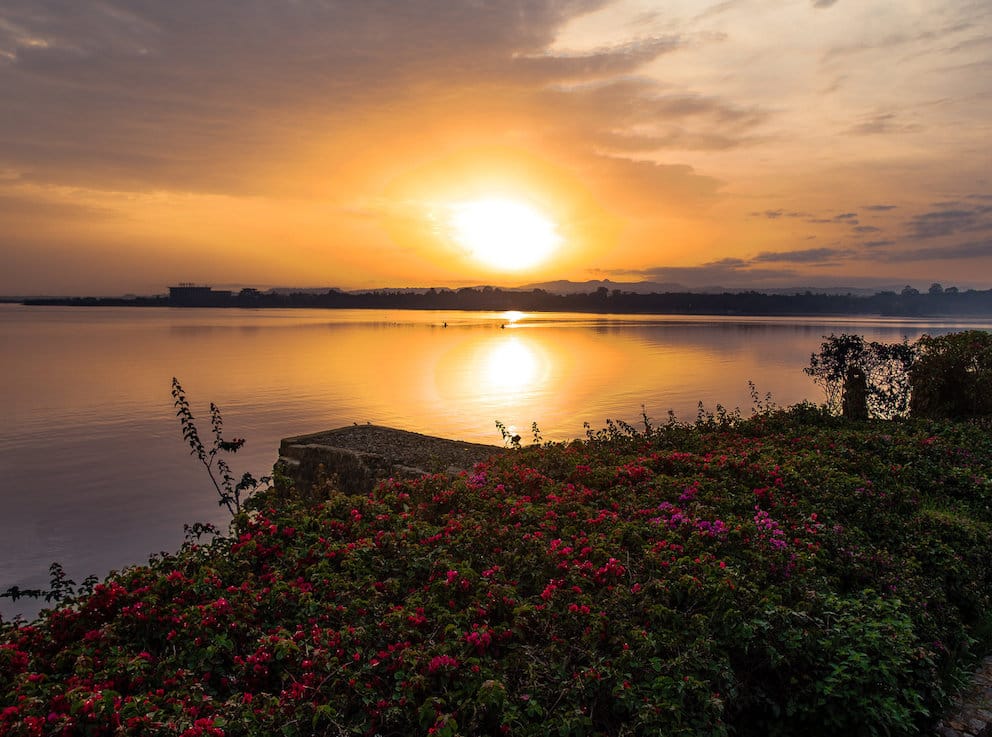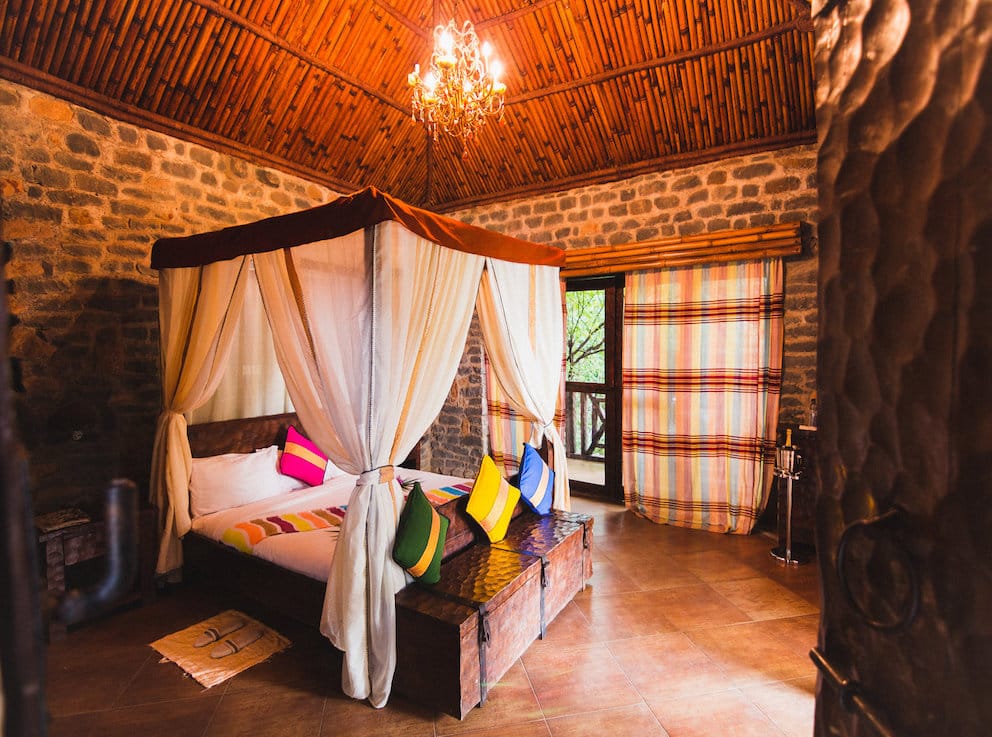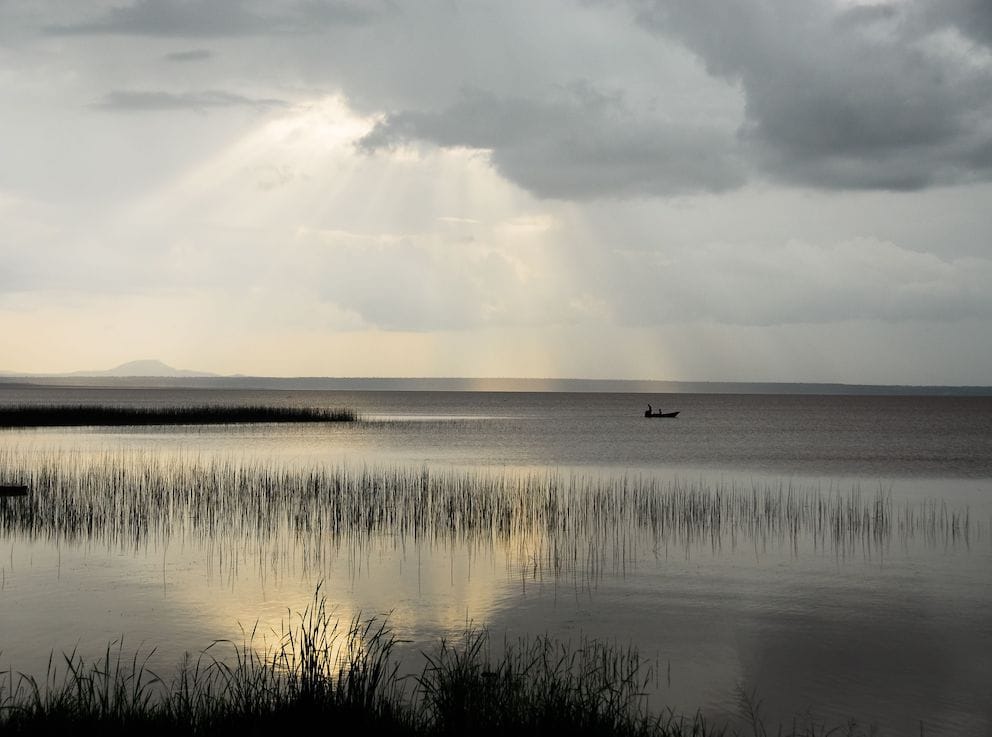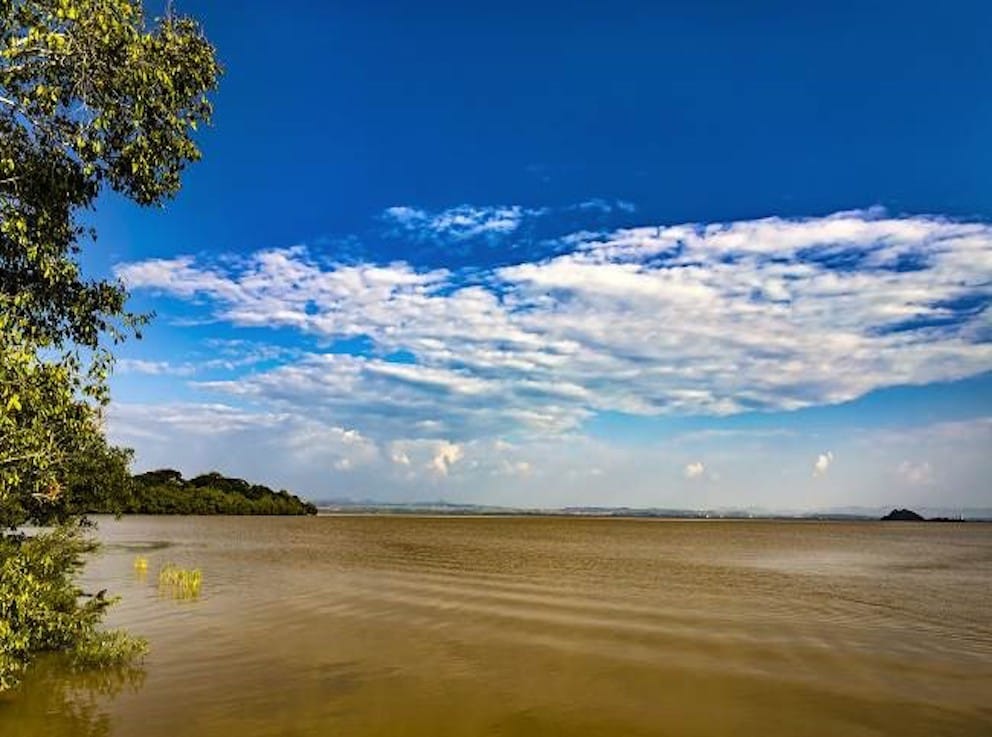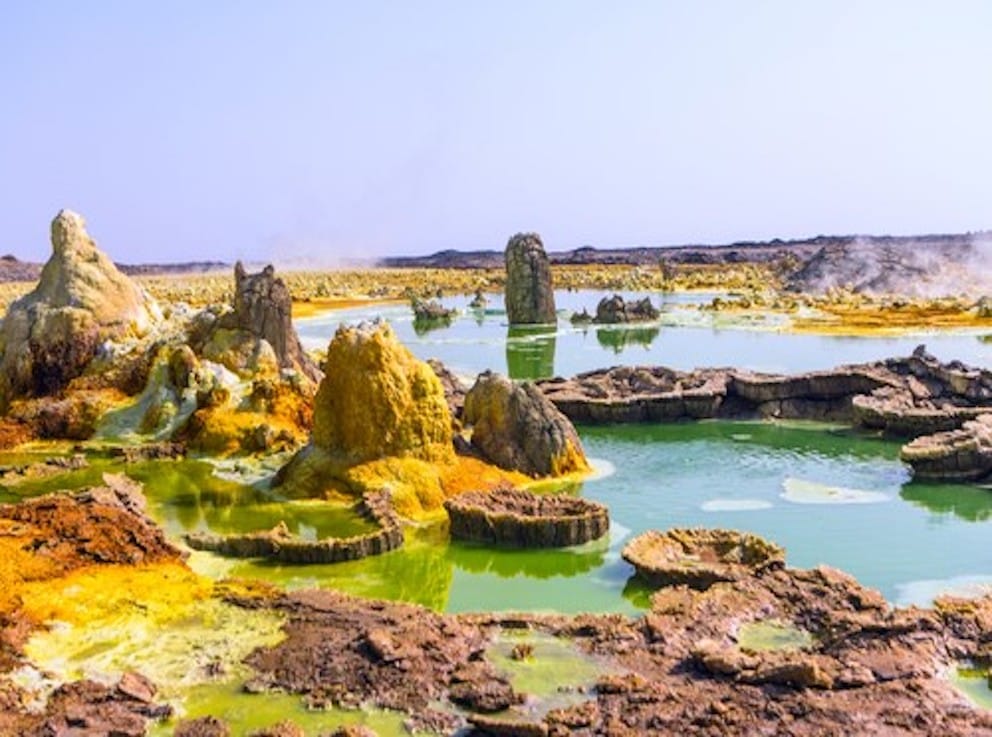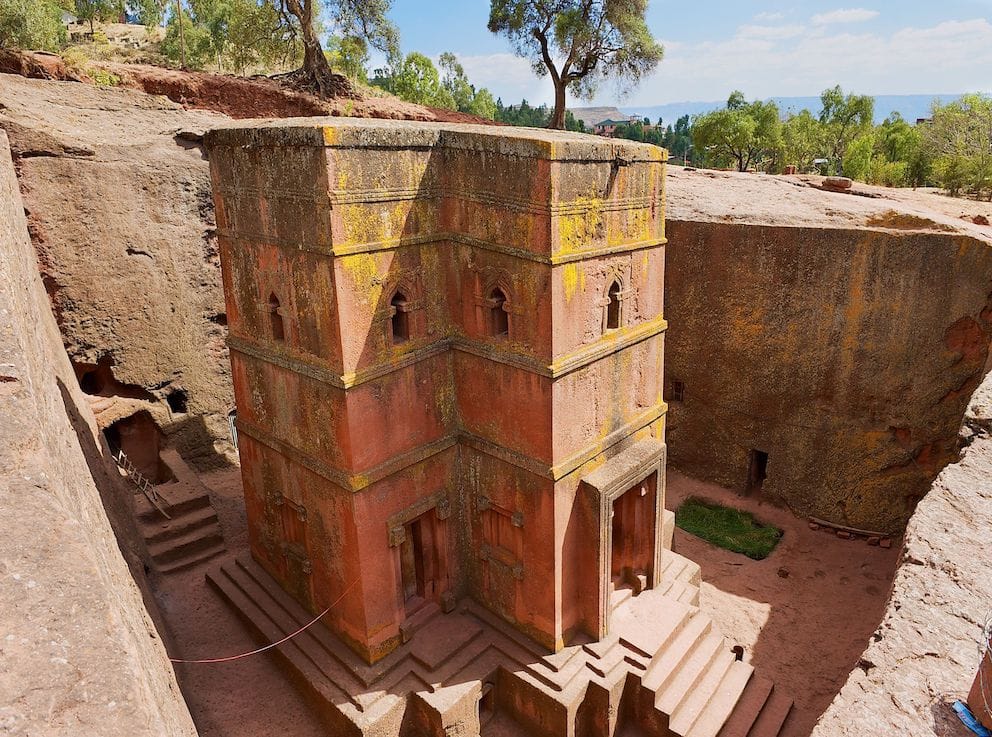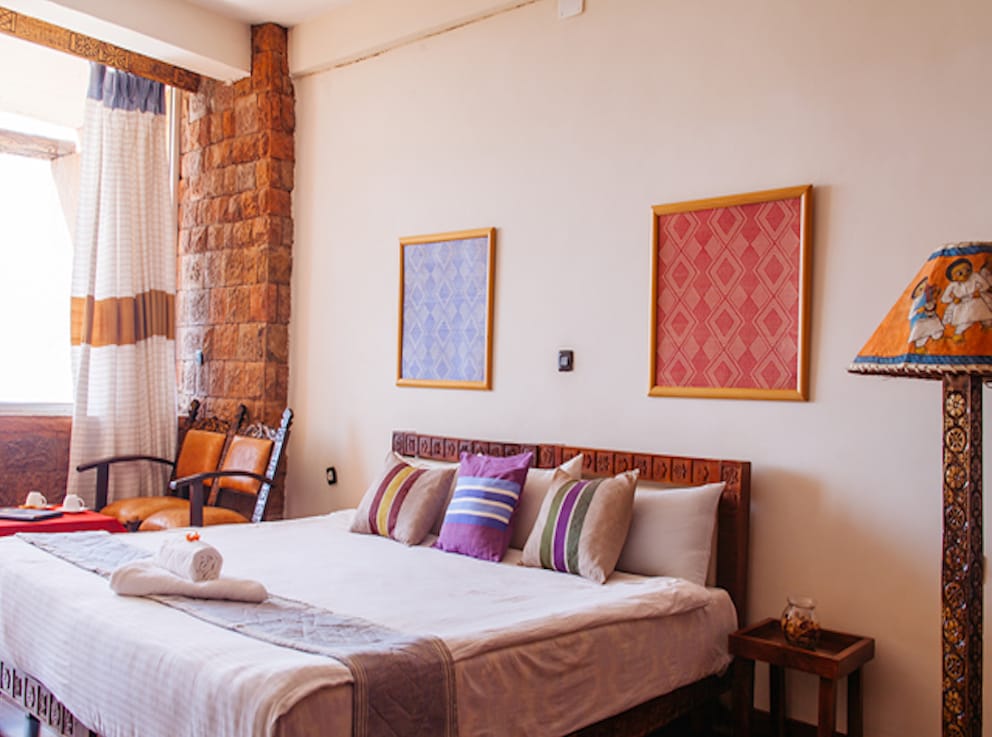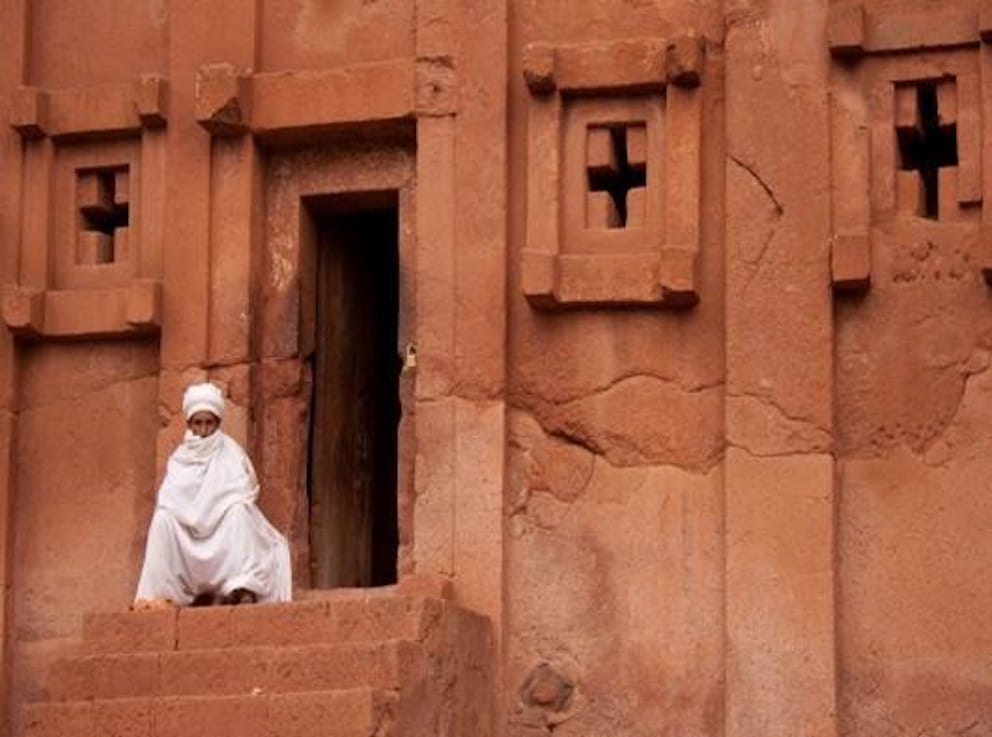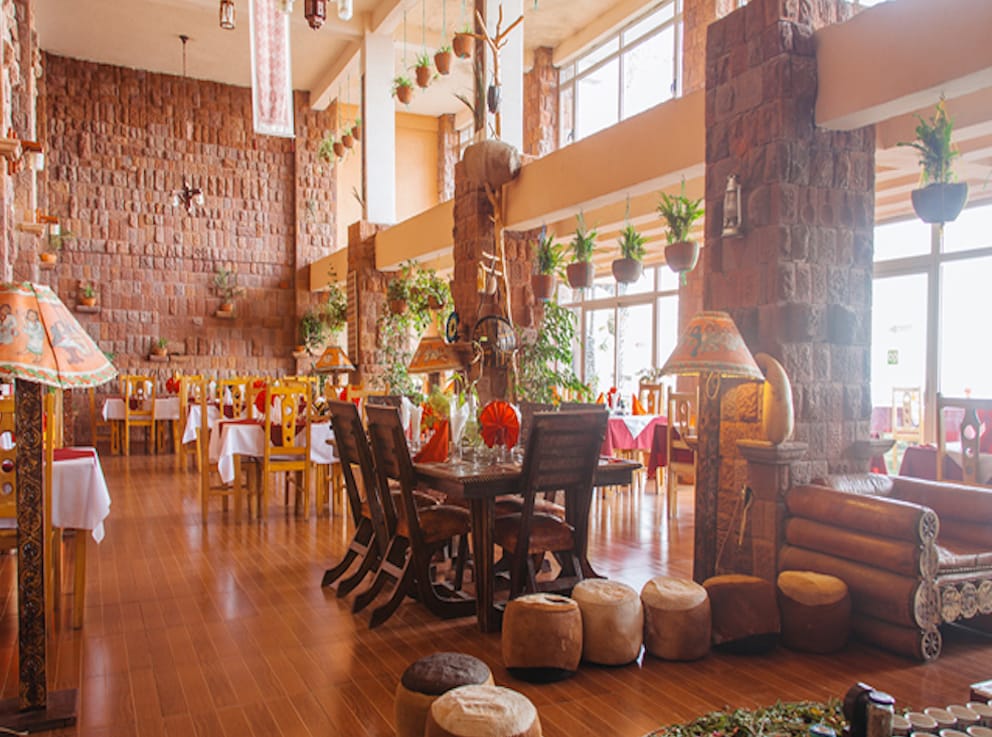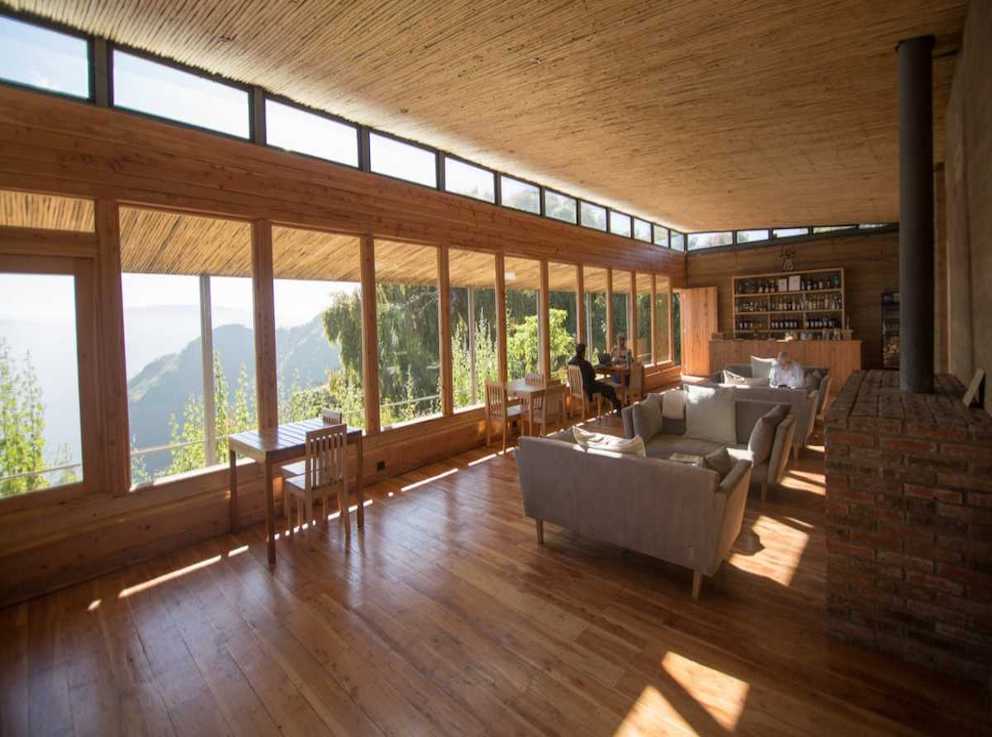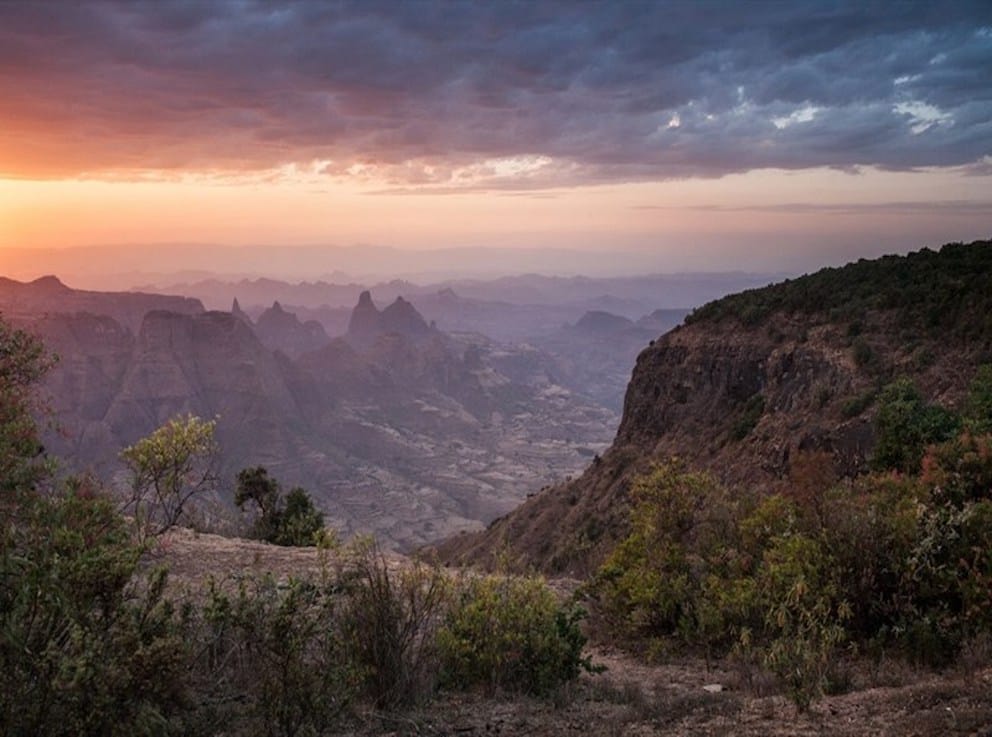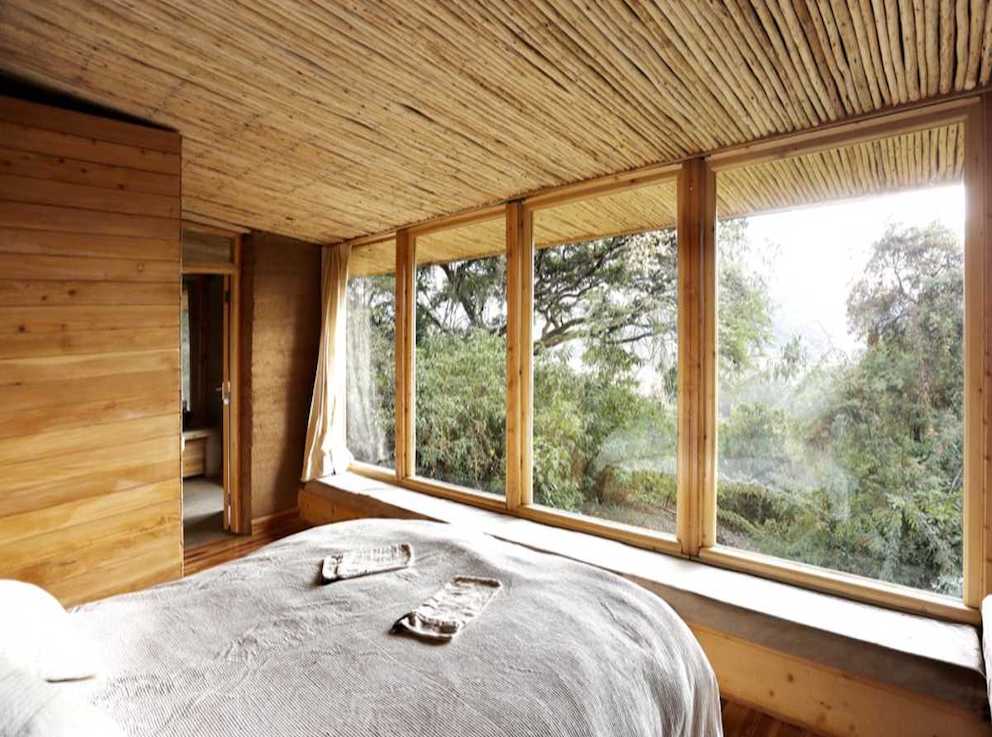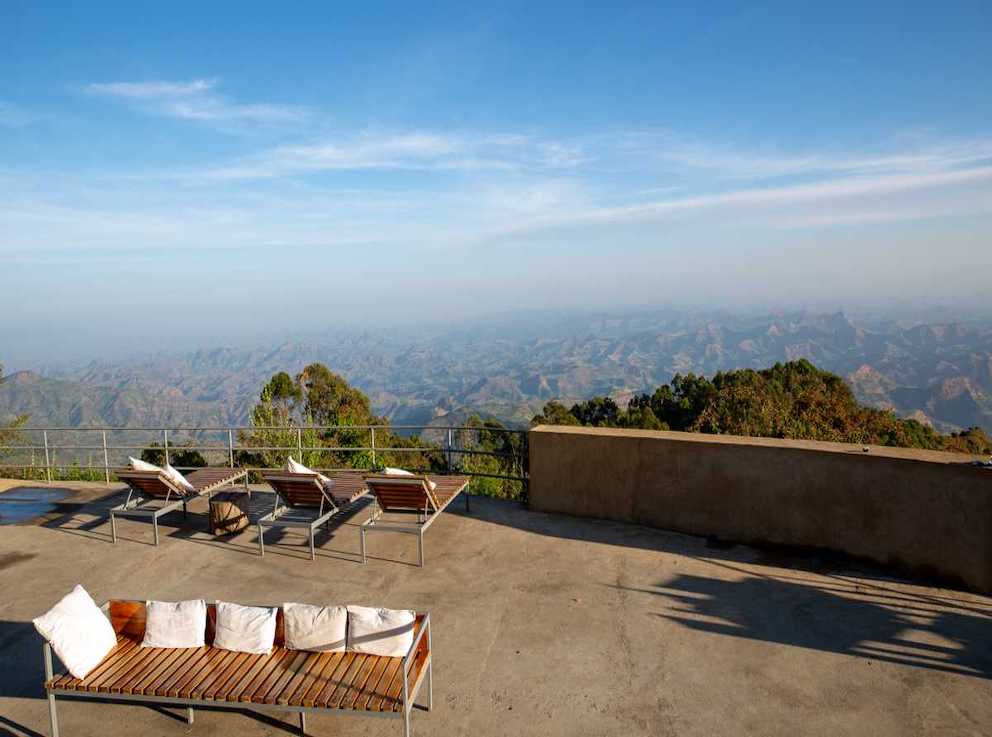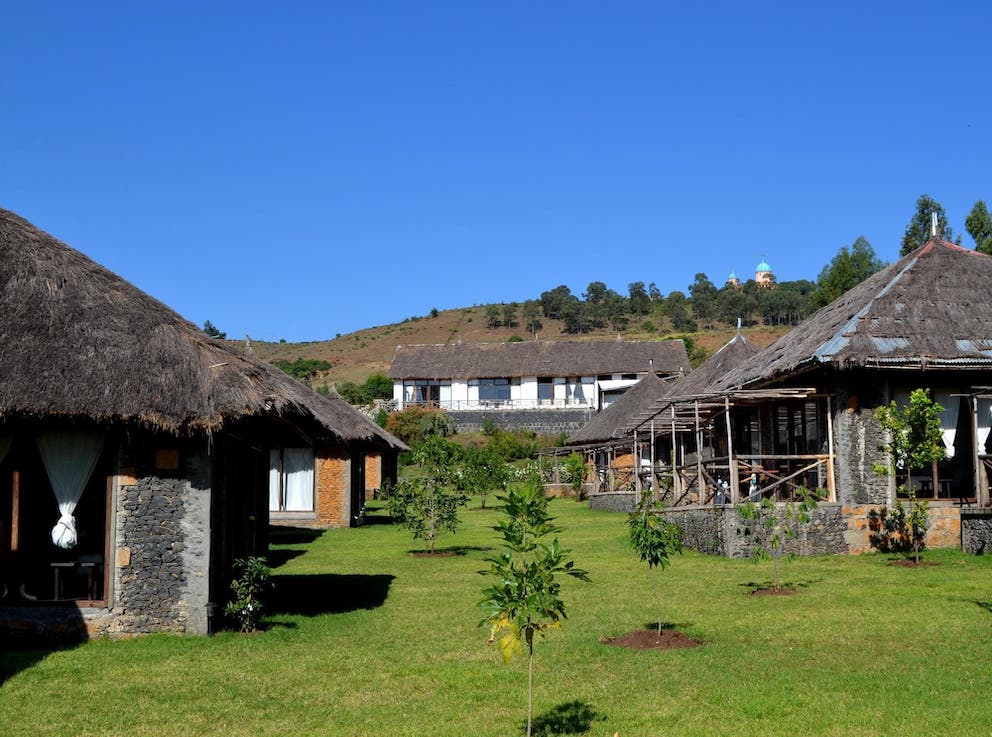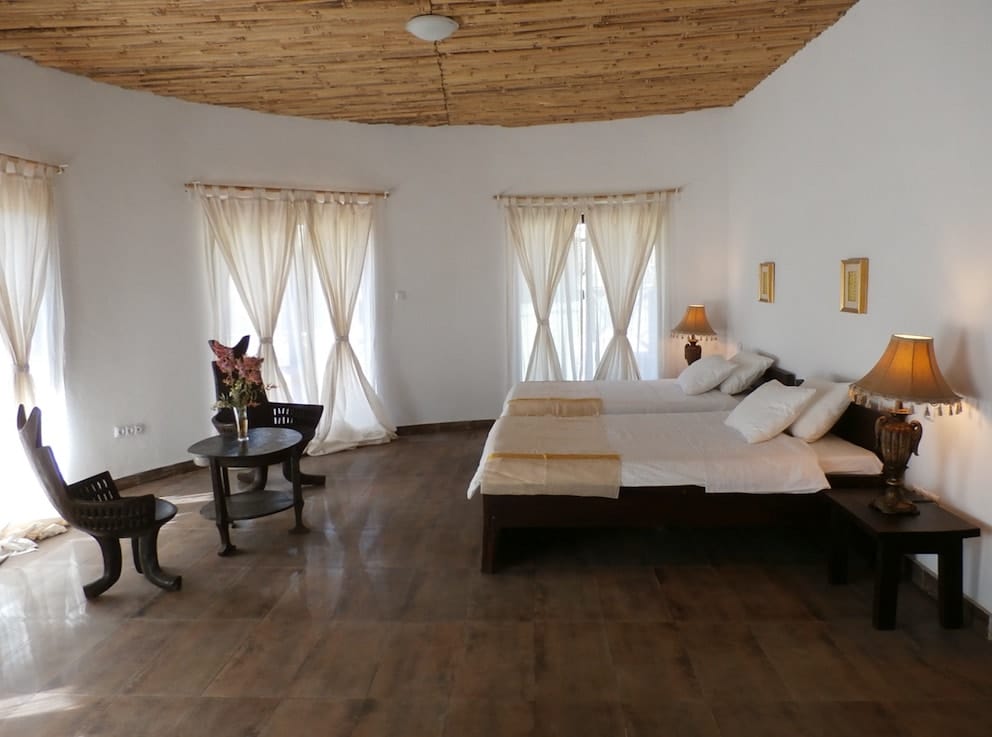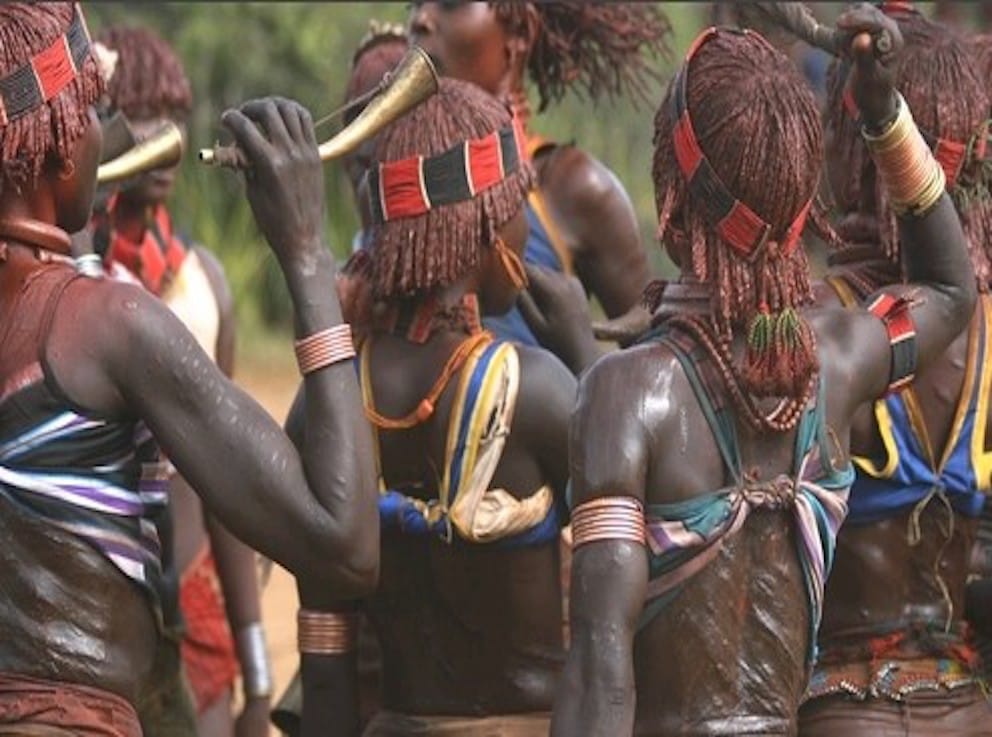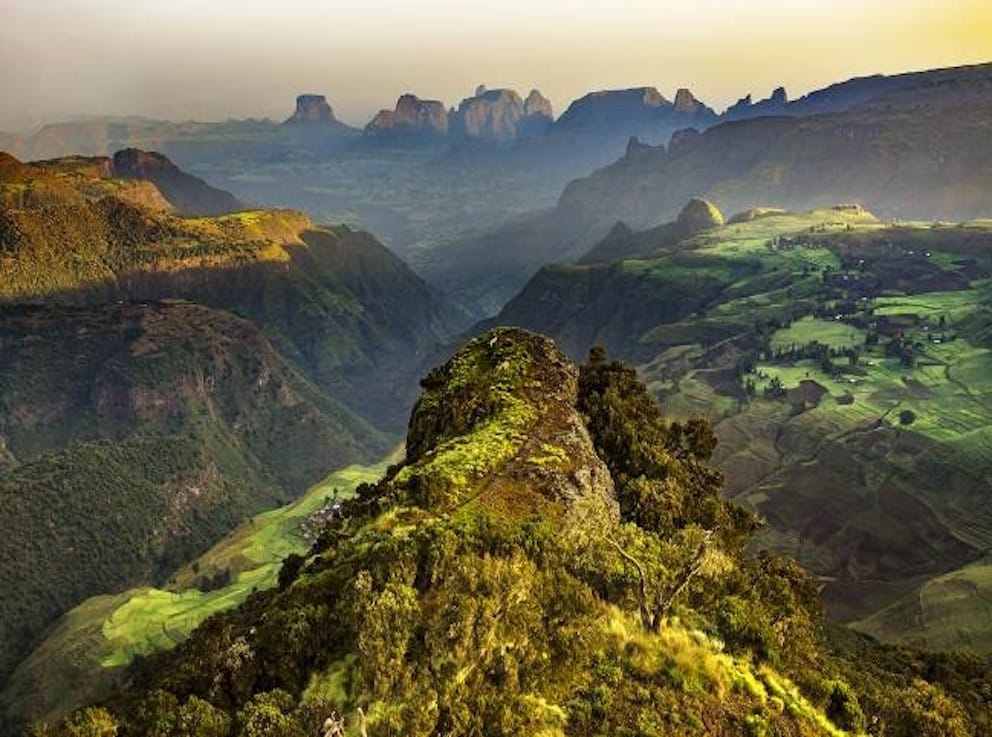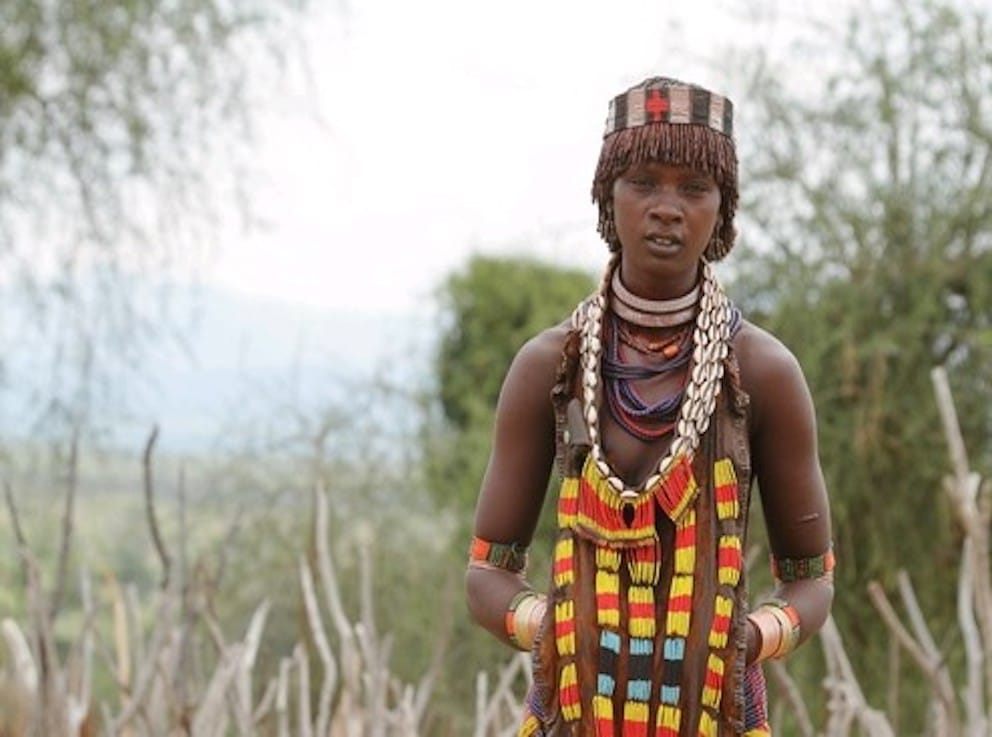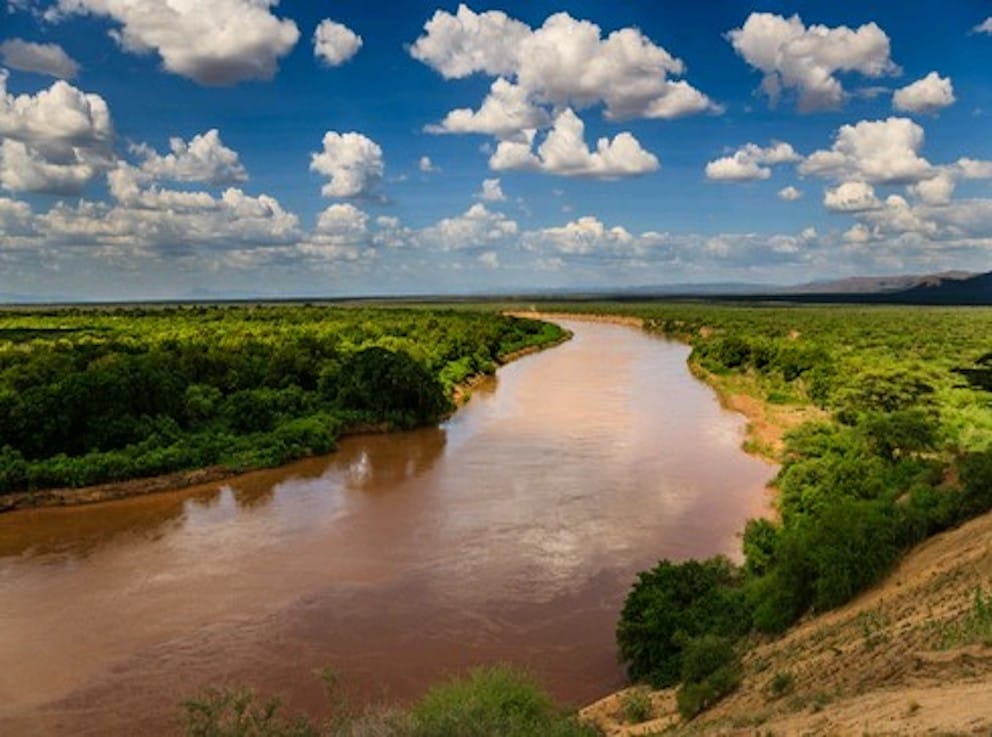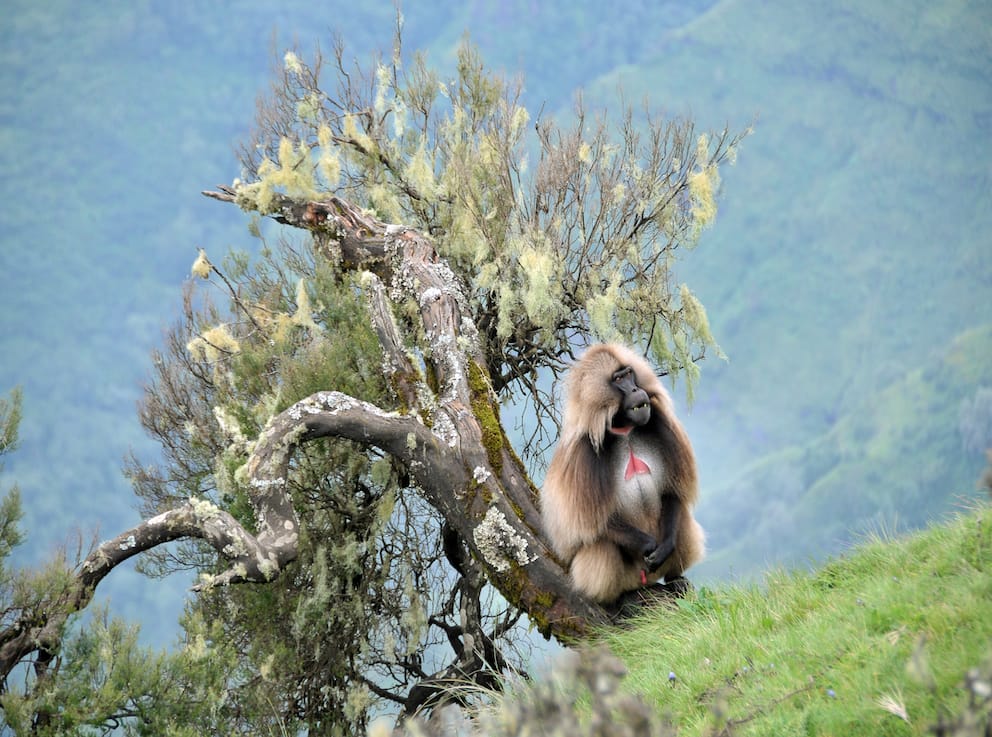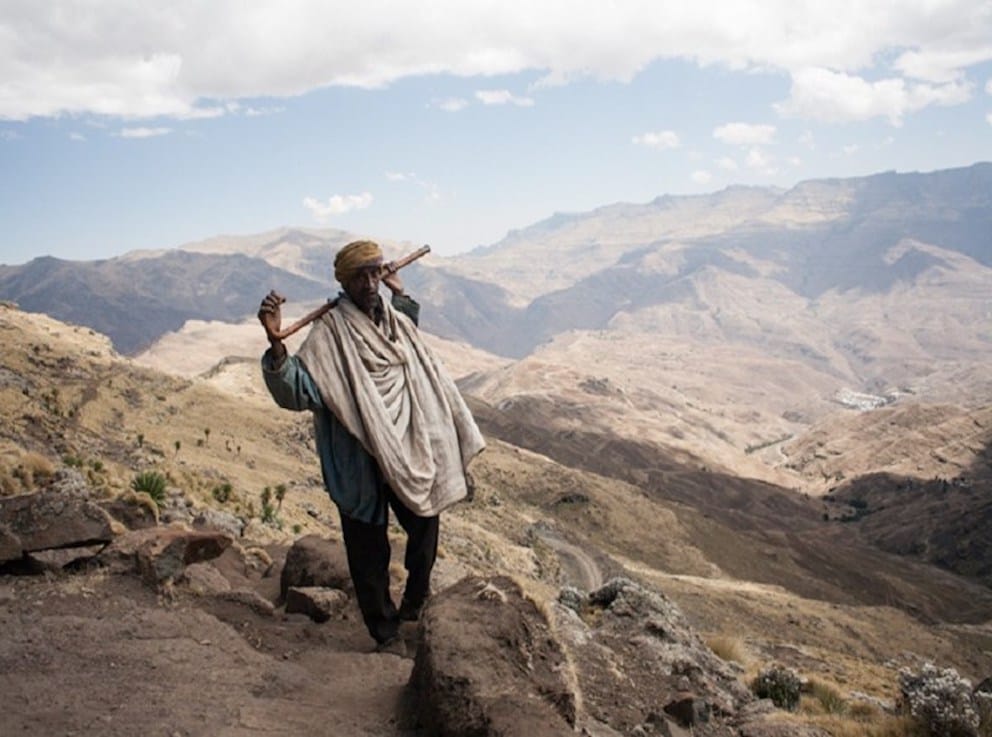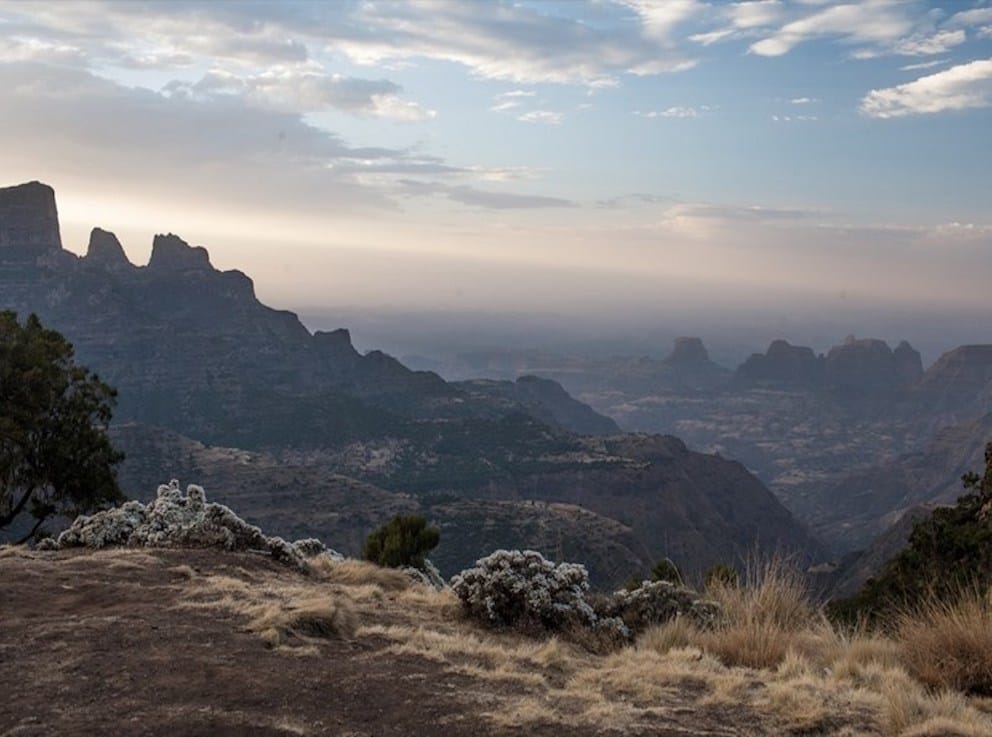Summary
From its breathtaking natural scenery to its deep spirituality, tribal diversity and pre-historic mystique, Ethiopia stirs the soul in a way no other African country can. Having retained its unique identity through the sands of time, it is rich beyond belief in cultural treasures.
Unfortunately at this time the security situation in Ethiopia remains uncertain, particularly in the Regional States of Tigray and bordering areas of Amhara and Afar States. We are extremely sad to say that we are currently not sending travellers to the country at this time but hope to do so once again in future.
- Human history begins with a 3.2 million year old hominin skeleton of ‘Lucy’ before moving through the Queen of Sheba’s realm, and on to one of the world’s earliest Christian civilisations. The evidence is everywhere and still being unearthed.
- Thanks to an orthodox, pre-Gregorian calendar of 12 months and five days, Ethiopia is seven years ‘behind’ the UK, while the time, dictated by consistent equatorial days, runs from 1 o’clock at sunrise to 12 o’clock at sunset.
- From the soaring Simien Mountains to the biblical landscapes of Tigray and the blistering Danakil Depression, Ethiopia’s landscapes are humbling and awe-inspiring in equal measure.
- The Omo Valley is home to a fascinating array of unique tribal communities including the lip-plated Mursi, the cow-jumping Hamar and the decoratively adorned Karo.
- Ethiopian food is delicious. Vegan travellers do well since meat, milk and honey are considered holy by some and eaten only on special occasions.
- Tourism in Ethiopia is in its infancy and there is little concept of luxury, style or customer service. Go instead for the fascinating cultures and the thrill of adventure.
Areas
Aksum
Once the centre of a mighty empire, allegedly home to the Queen of Sheba and supposedly founded by an ancestor of Moses, Aksum certainly holds status.
- Located close to Ethiopia’s northern border, Aksum stands today as an unassuming medium sized town but its ordinary looks belie its former wealth and power. It once lay at the heart of ancient Ethiopia, when the Kingdom of Aksum was an almighty empire.
- Ruins date from between the 1st and the 13th century A.D. and include monolithic obelisks, giant stelae, royal tombs and stone tablets with trilingual inscription in Greek, Sabaean and Ge’ez (Classical Ethiopian).
- Today, the majority of giant stelae sit within a modest park. The largest obelisk (33m long) lies on its side, another was taken to Rome and returned in 2008 and countless others lay faded in the grass, climbed upon by children.
- Aksum is home to a prestigious university and gives the town a scholarly but youthful feel. The local bars are surprisingly chic and the atmosphere is friendly and fun.
- At present there are no good hotels in Aksum, although a solid level of investment suggests that may soon change. For now expect functional, characterless accommodation that serves its purpose but nothing more.
Lalibela
Set amidst a dramatic landscape and swathed in holy mystery, Lalibela is a place of faith and festivals where Christianity was carved into the very soul of the earth.
- Lalibela is a major destination on Ethiopia’s northern circuit. The flight from Addis Ababa takes an hour.
- Ethiopia was one of the first nations to adopt Christianity in the 4th century. Lalibela’s eleven famous rock-hewn churches date from the 7th to 13th centuries and their layout is a symbolic representation of Jerusalem.
- The churches are carved from the bare rock and are interconnected by subterranean tunnels and catacombs. Two are decorated with wall paintings and figures.
- Far from being dusty archaeological relics, these churches are living, breathing places of worship, drawing white-robed worshippers in their thousands.
- Visit during the major festivals of Leddet (Christmas) and Timkat (Epiphany), both in January, to witness spirituality at its most raw and powerful. Otherwise aim for Easter, one of the monthly saint days, or a night vigil.
Take a look at: Maribela Hotel
Bahir Dar
A busy city on the edge of a captivating lake where biblical chanting floats across the water, rainbows dance through waterfalls and an immense river brews beneath the surface.
- Bahir Dar is the capital of the regional state of Amhara and lies 600 km north of Addis Ababa on the shores of Lake Tana. Being well connected, it is often the launch point for the ‘northern circuit’ of Ethiopia.
- Lake Tana is on UNESCO’s Biosphere Reserve list. It is dotted with 37 isolated islands, home to ancient churches, monasteries, manuscripts and paintings. Note that some do not allow female visitors.
- The lake is the source of the Blue Nile. Downstream, the Blue Nile Falls plunge over a 45m tall precipice across a 400m width. The deluge is an impressive sight.
- Bahir Dar is generously known as the ‘Ethiopian Riviera’ due to its wide avenues lined with flowering trees but a couple of streets back from the water it’s much like any other busy Ethiopian town. The markets are worth a browse.
- As with much of Ethiopia, accommodation is limited to practical, no frills lodging. The government-run hotel at Lake Tana claims the best location on the water’s edge.
Take a look at: Kuriftu Resort Bahir Dar
Gondar
A city of palaces and forts, Gonder has a regal history that outshines any Camelot comparison. While the legend of King Arthur is an enchanting fairytale, the city of Gonder is entirely real and stands today to tell its tales of valour.
- Gonder sits directly between Lake Tana and the Simien Mountains. Located within a couple of hour’s drive of each other, the three locations combine well.
- From the 12th century right through to the 20th, Gonder was home to the emperors who ruled the country. A remarkable collection of frescoed churches, castles and fortifications remain.
- The town is best known for Fasil Ghebbi, the 16th century residence of the Ethiopian emperor Fasilides. Enclosed by 900m of stone walls, the Royal Enclosure contains churches, monasteries and six castles.
- Visit in January when the swimming pool sized ‘bath of King Fasilides’ is filled with water and worshippers plunge in to celebrate Timkat (Ethiopian Epiphany).
Take a look at: Mayleko Lodge
Simien Mountains National Park
Travellers weary of human-built marvels will delight in the natural wonder of the Simien Mountains. Homer claimed the rocky spires were the chess pieces of the gods, and indeed, the mountains are a playground of heavenly grandeur.
- Massive erosion of an ancient volcanic massif has created a lush, green landscape of jagged spires, infinite plateaus, sharp precipices and dizzying drops of over 1500 sheer metres.
- The park is UNESCO listed for its endemic species. Gelada baboons feed in great, golden-maned troops and Walia ibex are occasionally seen, but the Ethiopian wolf is incredibly rare – do not expect a sighting.
- While the Simiens are stunningly beautiful the park is not a wilderness. Much of the lower land is cultivated, tiny villages line mountain roads and Debark is a busy town.
- Tourism is hugely underdeveloped and trekking is currently limited to a small number of routes. Since visitor numbers remain relatively low, they do not feel overused.
- The mountains are home to one of the only excellent quality lodges in the country – Limalimo. Its minimal timber-clad design, delicious cuisine and breathtaking views are unrivalled.
- Camping in the park is possible but not recommended. The sites are in dire need of TLC.
- Rain is possible year-round and it is customary to shelter in the nearest home until a shower passes. The driest time is December-March but during September/October a riot of wildflowers covers the peaks.
Take a look at: Limalimo Lodge, Simien Mountain Lodge
Tigray and the Gheralta Region
With no modern references, the sacred landscapes of Gheralta leap straight from the pages of the Old Testament. Terracotta mountains loom over the dusty Hawzien Plains while ancient rock hewn churches teeter impossibly on rocky pinnacles.
- Gheralta sits within the most northerly of Ethiopia’s Regional States, Tigray. The churches of Tigray are often found in clusters and the Gheralta region is one such cluster.
- The 121 churches date mostly from the 5th to 14th centuries but some are thought to pre-date Lalibela. The majority are monolithic, hewn from the natural rock.
- Abuna Yemata Guh church is carved into the top of a rocky pinnacle. The only way to reach it is to free climb using ancient worn foot and hand holds and there are no ropes. Religious frescoes, holy books, and a solitary priest await. It’s spellbinding.
Take a look at: Gheralta Lodge, Kor Kor Lodge
Lake Langano
Lake Langano is one of the Great Lakes formed by the Rift Valley. These lakes present a collection of some of the largest, deepest and oldest in the world, a handful of which are found in Ethiopia.
- Lake Langano is a three hour drive south of Addis Ababa and makes a good stop off point en route to the Bale Mountains.
- The water is the colour of milky tea and seemingly uninviting, but it is one of the only bilharzia-free lakes deemed safe for swimming, sailing and watersports.
- A selection of beachside hotels and lodges have sprung up around the lake. The offerings on the western shores are better than those on the cheaper eastern shores.
- The East Langano Nature Reserve hugs the south eastern shore and is home to colobus monkeys, warthogs and the odd hippo. The birdlife covers 300 species, 7 of which are endemic.
- This is not a wildlife destination as such but exploring the cool forests by foot or on horseback is delightful, especially for those feeling a little history and culture-weary.
Take a look at: Hara Langano Eco lodge, Sabana Beach Resort
Omo Valley
The Omo Valley is a phantasmagorical living museum of ancient customs and tribal culture where anthropological intrigue fixates even the most hardened traveller.
- The Valley runs through south west Ethiopia to the Kenyan border where the Omo River flows through the islands and marshes of a rich delta and into Lake Turkana.
- It is inhabited by a rich assembly of distinct cultural communities each with their own unique identity, mother tongue and set of customs.
- Among the most famous communities are the lip-plate wearing Mursi, the body painted Karo, the crocodile hunting tribes of the delta and the Hamar, known for their cow-jumping initiation ceremonies.
- Travel here is difficult and costly if you want to avoid being the detrimental breed of click-and-dash tourist. Specialist expeditions to remote areas are the best way to experience the true intrigue of the region.
- Much of the Valley is inaccessible during the rainy season (March to June) and temperatures during June, July and August can reach 40°C. October to February is best.
- The cultures of the valley are delicate and not everyone benefits from the spoils of tourism. It is imperative that travel to this region is undertaken respectfully and responsibly.
Take a look at: Kizo Lodge, Lales Camp
Bale Mountains National Park
Dramatic Afro-alpine scenery, ethereal cloud forests and a surprising array of endemic wildlife combine to create a peaceful montane retreat far from the lowland dust and heat.
- The Bale Mountains are approximately 400km from Addis Ababa and the drive takes around 6 hours. A stop at Lake Langano breaks the journey nicely.
- Wet, relatively mild, and with great variance in altitude and habitat, the mountains support a great number of specialist species. Five, including the Bale monkey and the giant mole-rat, are found only here.
- Sightings of the rare Ethiopian wolf are much more likely here than in the Simien Mountains. Mountain nyala, Menelik’s bushbuck, spotted hyena, lion, leopard and African wild dog also occur but in tiny numbers.
- Botanists are drawn here by the 1300 species of flowering plants, 14% of which are endemic to Bale, while birders will appreciate the rich variety of alpine specialists and raptors.
- Hiking is the best way to take in Bale’s beautiful scenery. Routes are generally less challenging than those of the Simien Mountains but still require a guide.
Take a look at: Bale Mountain Lodge
Danakil Depression
The divergence of three tectonic plates has created the hottest and most inhospitable place on earth – a scorching inferno of boiling mud, sulphurous crusts and seething volcanoes.
- Situated in the far north by the Eritrea and Djibouti borders, the Danakil Depression lies 100m below sea level on a volatile tectonic boundary where the earth’s crust is perilously thin.
- The tortured landscape is one of shimmering salt lakes, acid yellow sulphur deposits, explosive geysers and glowing volcanoes.
- Traditionally the nomadic Afar people have eked a living out the land by salt mining. Great blocks are chocked onto camel caravans for transport to Mekele. The arrival of a new tarmacked road may soon spell the end of this ancient custom.
- The area is often referred to as the cradle of humanity since it was here that the famous skeleton of ‘Lucy’ was discovered.
- At present, the only accommodation is in rudimentary camps.
- It goes without saying that the Danakil Depression is hot. Temperatures average 35°C and regularly creep towards 50°C. Visit between November and March when temperatures average a friendlier 25 °C.
Access
International:
Fly direct from London to Addis Ababa on Ethiopian Airlines
Internal:
Commercial domestic flights are available between cities and a car and driver/guide works for shorter journeys. Helicopters are required for comfortable travel to remote regions.

